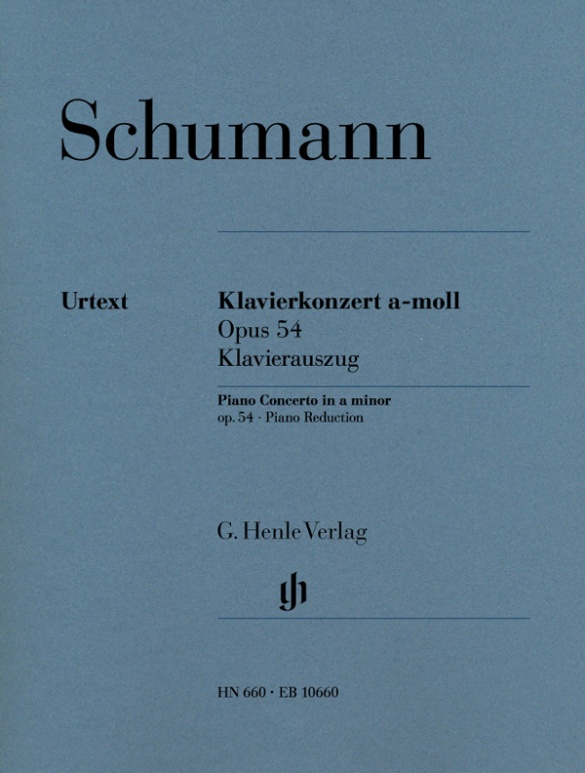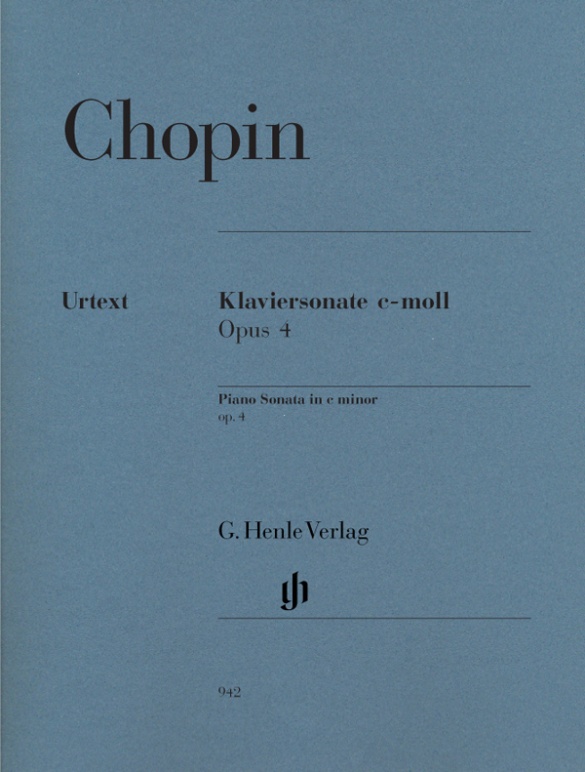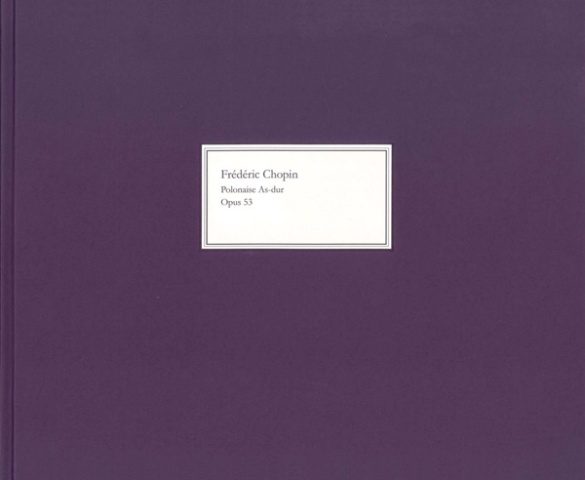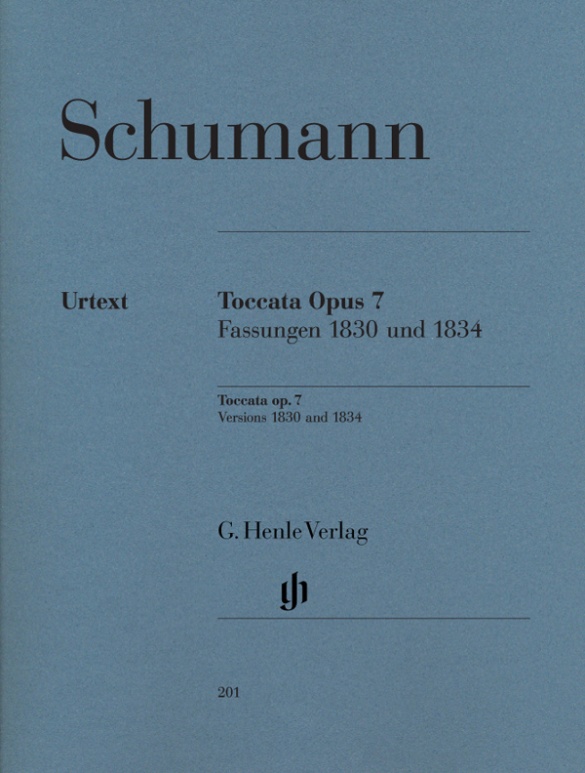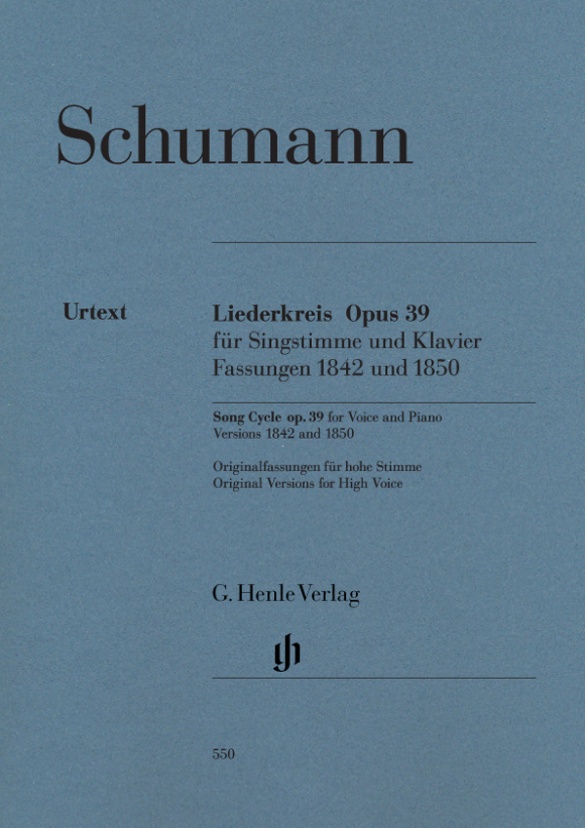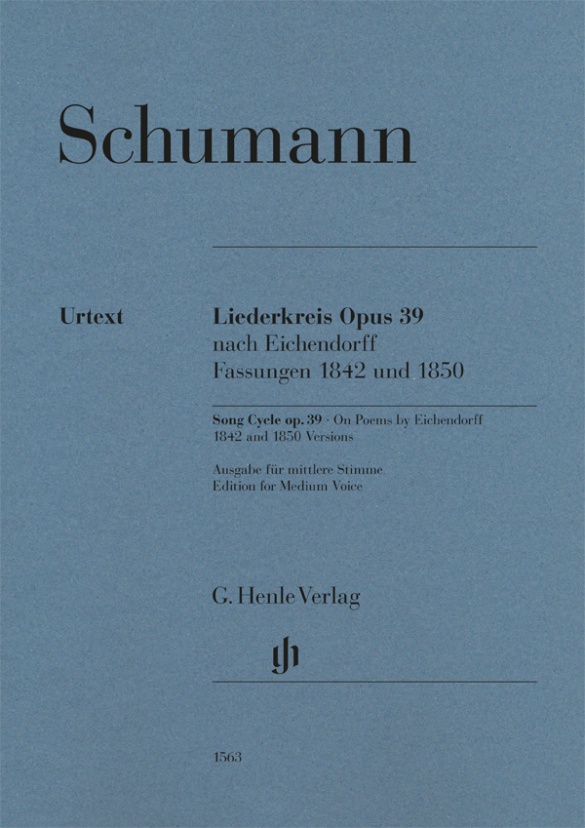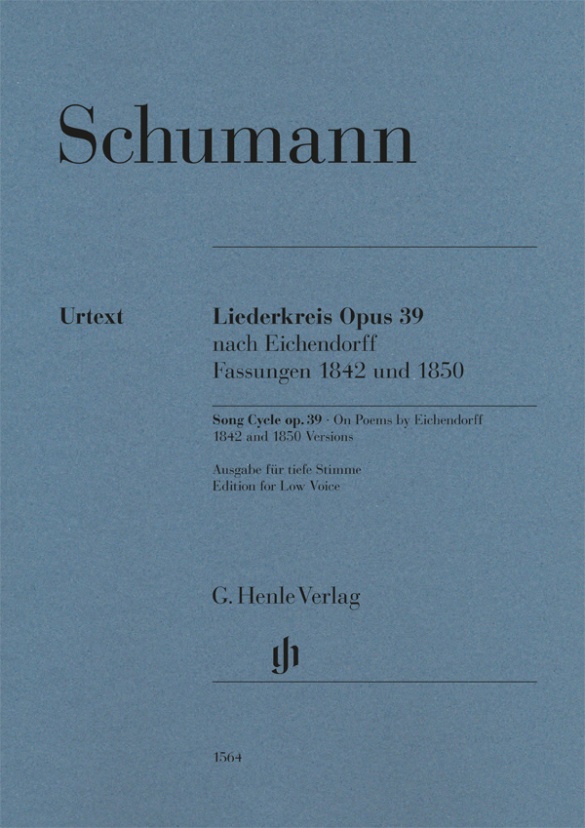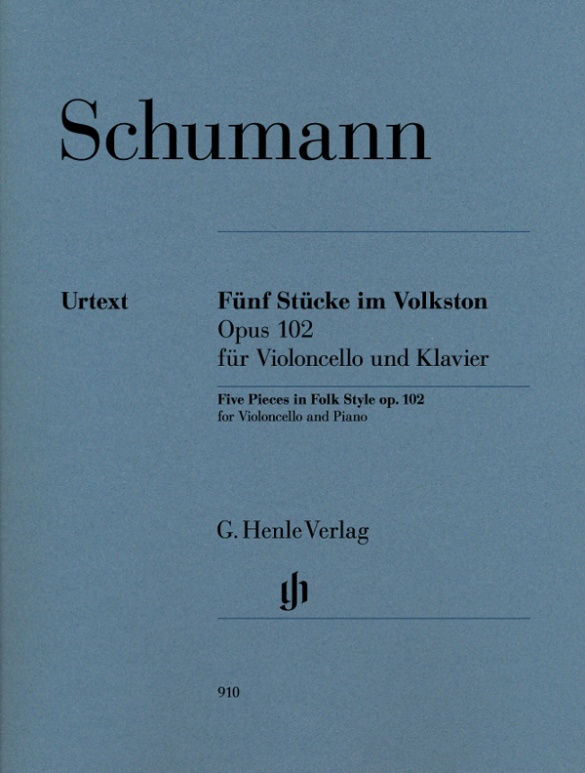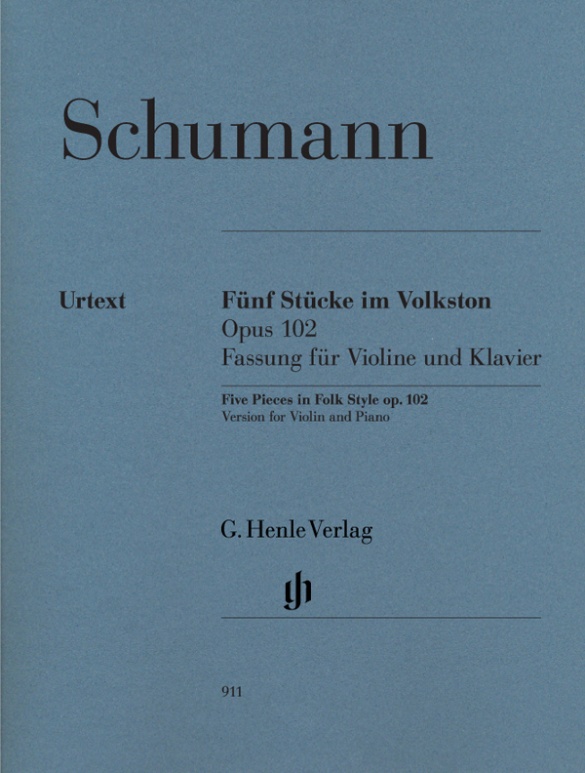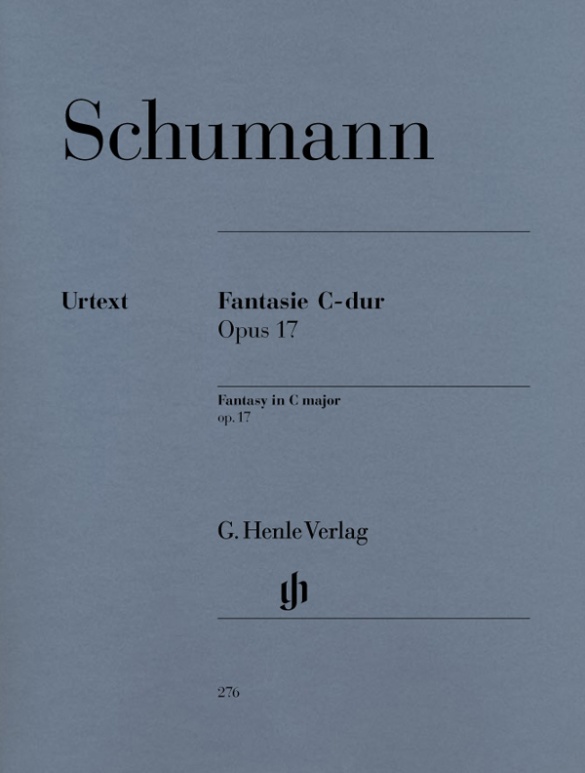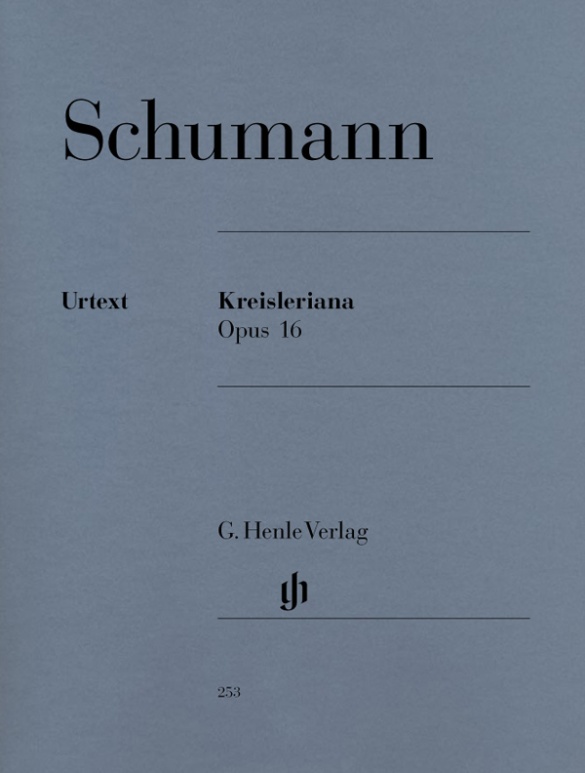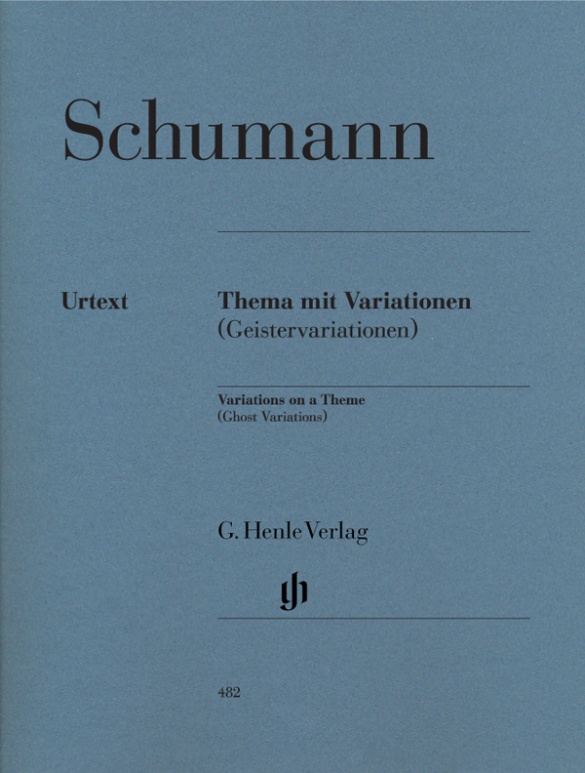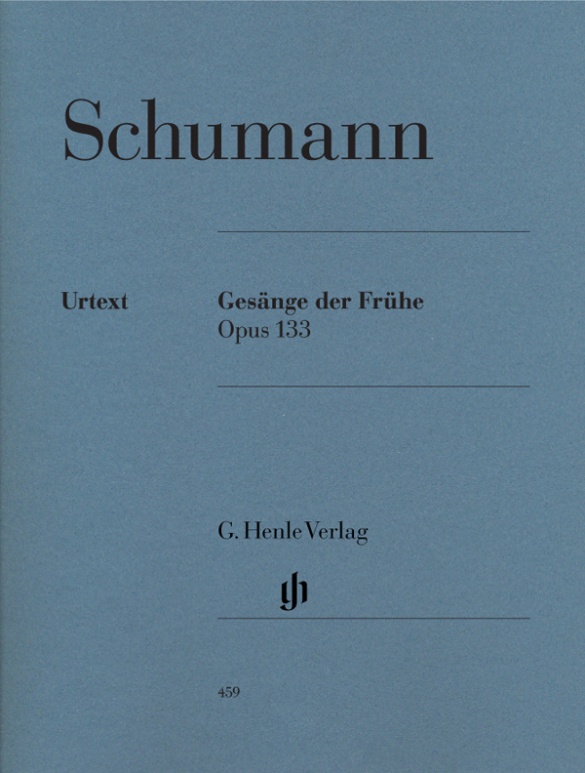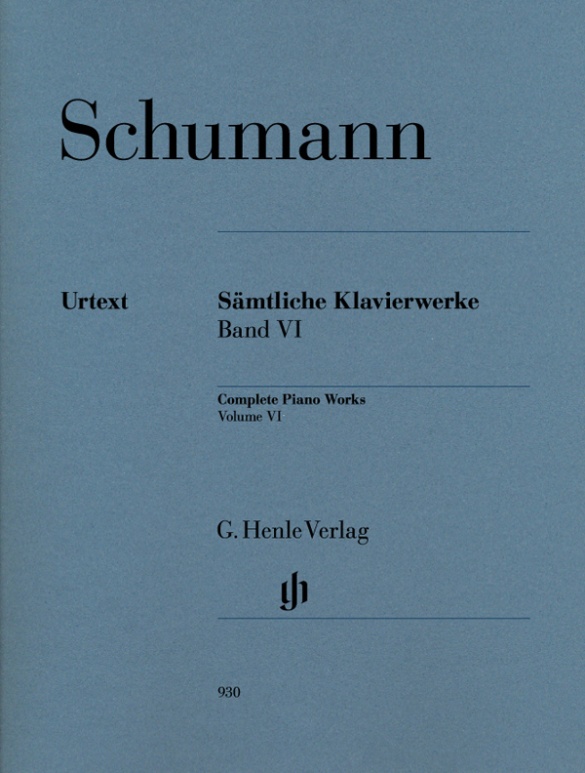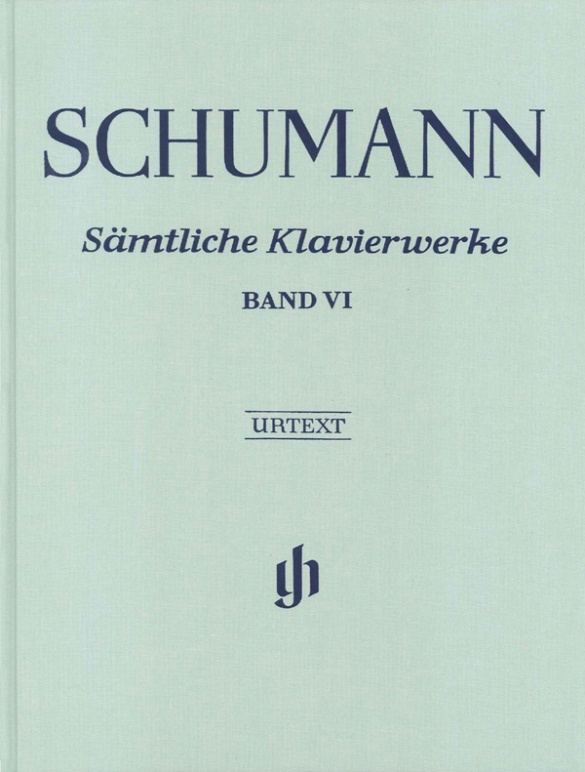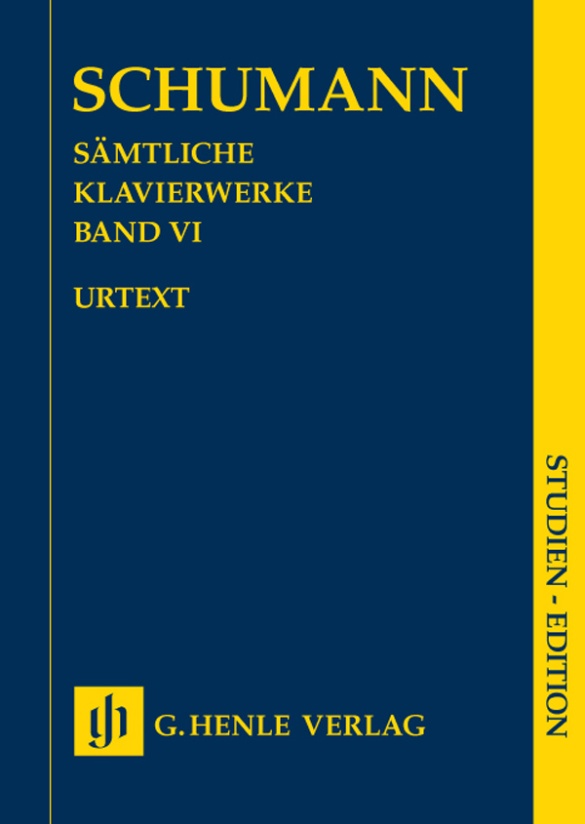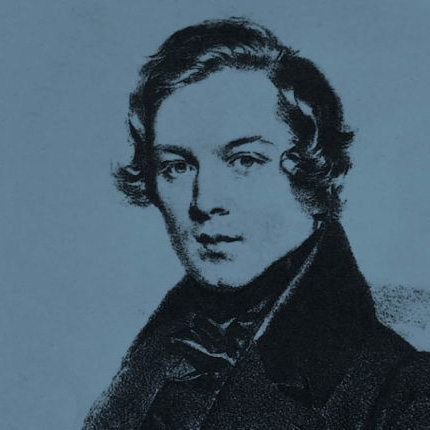
In 2010 the world of music celebrated the 200th birthday of the composer Robert Schumann. To mark this occasion, Henle Publisher's CEO Wolf-Dieter Seiffert wrote around 25 essays dedicated to his idol and also one of the Publishing House's “household deities”. Every fortnight, essays predominantly concerning Schumann’s works for various settings and from different genres appeared, as well as numerous interviews with notable Schumann artists and editors of his works, interesting links, etc. There is even a personal letter addressed to Mr Schubert himself among them. We believe that these contributions are well worth reading, even after the event, particularly since they are not purely academic but written in a more relaxed, journalistic manner. Why not browse through them yourself!

Dear Reader,
We are ready to start: The Schumann-Forum at G. Henle Verlag has its premiere. What awaits you?
Audio-interviews
on Schumann that I specially led with exceptional artists and musicians for the Schumann Forum 2010. These will be posted and more are to follow in the course of the year, in the original language (German or English). Look forward to Christian Gerhaher, David Geringas, András Schiff, Mitsuko Uchida, Edith Wiens – and others with whom we want to surprise you.
The musicians sponsored autographed CDs of their Schumann recordings.
With some luck you might win one, and be moved to sing:
I cannot grasp it or believe it, (Ich kann's nicht fassen, nicht glauben,)
I am under a dream’s enchantment; (Es hat ein Traum mich berückt;)
How could Henle, among all the others (Hat Henle doch unter allen,)
Exalt and make happy poor me? (Mich Arme/n erhöht und beglückt?)
Audio and text interviews with leading musicologists and editors of our music books.
Each month focuses on a specific Schumann topic. Our experts introduce Schumann Urtext editions recently published by G. Henle Publishers.
Links to the World Wide Web,
specially selected for you with an eye to rarity and detail. You will find a first example at the bottom of this page.
Have I awakened your interest? From now on I will be presenting new “Schumannalia” from Henle every two weeks. On February 1 and 15 Schumann’s Piano Concerto will be the centre of attention. In March we’ll continue with Schumann and Chopin. I am greatly looking forward to your visit.
If you would like to correspond with me, I can only encourage you to do so – in German or English – to
» davidsbuendler@henle.com
Very truly yours
Dr. Wolf-Dieter Seiffert
Managing Director
February 1, 2010
Mozart wrote far more than 20 piano concertos, Beethoven accomplished five. Schumann composed ”only“ one piano concerto – but what a masterpiece! Pianists and fans of classical music the world over adore it beyond all measure.
In a few short weeks Robert Schumann’s Piano Concerto will be published in a brand-new G. Henle Urtext edition. To our great satisfaction, no one other than Mitsuko Uchida was willing to act as artistic council and provide and contribute the fingerings for this edition.
Dame Uchida has long been closely connected to Henle, but until now we were never able to convince her to engage in active collaboration. Opus 54 was the changing point. We hope that you will be as enthusiastic over the result as we are.
Listen here to the phone conversation I had with Dame Mitsuko Uchida on January 27, 2010. We took the opportunity to talk about the new Urtext edition (in German):
The extraordinary musician, Dame Mitsuko Uchida, reveals her very personal relationship to Schumann’s extraordinary work here:
And here is the YouTube-clip of her Schumann concerto with the Berlin Philharmonics, conducted by Sir Simon Rattle on September 13, 2009:
Further editions of this title
» Breitkopf & Härtel, the renowned Schumann publishers are our partners for the publication of the Urtext score and orchestra material which is also available.
Mainly the work of the editors at Henle is to supervise the work of renowned musicologists who edit the music of composers for which they are known to be specialists. However, even since Henle was founded, their editors themselves have often also presented their “own” editions. Thus, my colleague at Henle, Dr. Peter Jost who is an acclaimed Schumann expert, was entrusted to edit the Piano Concerto himself.
On January 25, 2010 Peter Jost and I talked about the details of his work, and the challenges he met in editing Schumann’s Piano Concerto.
In this interview he comments on the sources, the problems involved and also explains why, in his opinion, the Henle edition will certainly be commended as an important reference volume of Schumann’s Piano Concerto.
The complete interview is available here for you to read. It also includes an image of Schumann’s autograph.
» Interview with Dr. Peter Jost (PDF)
All those of you whose interest goes even further I would like to point to the preface in the Henle edition. Our website offers the prefaces (and even the critical commentaries) of all Henle editions for reading and free downloading. Follow this link to the Schumann concerto:
» Schumann op. 54
I came across a superb article (in German language) on Schumann’s Piano Concerto, written by Thomas Pehlken. The article is located on the homepage of www.Klassik.com:
» Klassik.com, 100 Meisterwerke“, zu Schumann op. 54 (in German)
Last but not least I’d like to add something to chuckle about:
The following funny story has been related for years now: Daniel Barenboim and Zubin Mehta, who are friends for many, many years, are performing op. 54 with the Israel Philharmonic Orchestra. It’s extremely hot, and Barenboim asks Mehta to wait with the difficult cue for the pianist until he gives him a sign. But Mehta enters the stage and immediately nods his head for the orchestra to start:
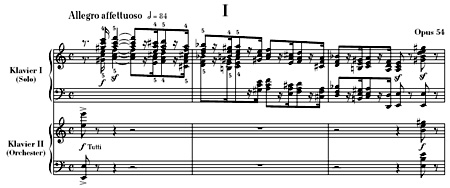
Barenboim hardly accomplishes his first accords. The final accord of the first movement has barely faded out, as Barenboim pulls out a handkerchief, evidently because of the heat. „Quid pro quo“: But he immediately drops the handkerchief and starts to play the slow movement. Understandably Mehta is now in difficulties of some sorts:
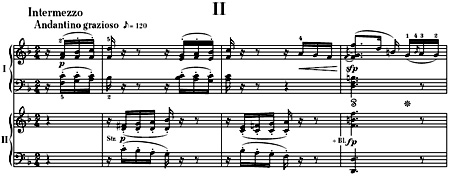
Luckily, the Israel Philharmonic Orchestra knows Schumann’s Piano Concerto well enough to manage without the conductor.
I assume that you will have a personal favourite recording of Schumann’s piano concerto op. 54. Jpc, one of the major German online shops for CDs, lists over 200 (!)
» recordings of Robert Schumann’s piano concerto on CD
therefore, this piece might certainly be among the eternal top-10 of classical music.
Murray Perahias : this recording must be at least 20 years old, a wonderfully colourful and nuanced live recording with Colin Davis conducting the fantastical play of the Symphonieorchester des Bayerischen Rundfunk: Sony 518810-2 (I must add that Perahia’s more recent recording with Claudio Abbado and the Berliner Philharmoniker is also grand).
Christian Zacharias and the masterfully lucid sound of chamber music performed by the Kammerorchester Lausanne, and conducted by himself: MDG 340 1033-2.
And last but not least, Lars Vogt, perfectly meeting Schumann’s tone with his exquisitely harmonious play together with the City of Birmingham Symphony Orchestra, splendidly led by Simon Rattle: EMI 7-54746-2.
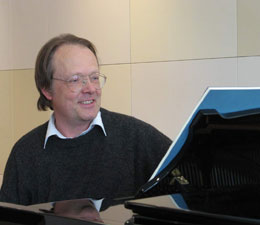
Now, however, we want to continue with our introduction of the new Urtext edition of Schumann’s piano concerto:
We are convinced that not only are the fingerings of the solo voice, supplied by no one lesser than Mitsuko Uchida, an exquisite specialty; rather the very well playable and wonderfully sounding piano reduction of the orchestra part is an invaluable asset, as well. Johannes Umbreit, lecturer at the Musikhochschule Munich, is the author.
It is no small coincidence that Johannes Umbreit‘s name appears in so many Henle editions. When piano reductions of major concerts are needed, we rely on him. We regard Johannes Umbreit as a master of his class. And so far our customers have always reacted with highest praise to his piano reductions, from Bach to Bruch, from Stamitz to Chausson.
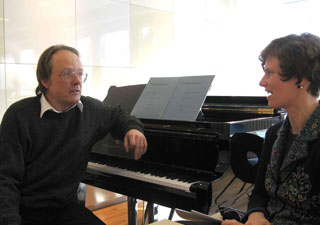
My colleague, Dr. Annette Oppermann, who is responsible for the publication of the Urtext edition of the piano concerto at Henle, spoke to Johannes Umbreit about the special challenges of this particular piano reduction, and the advantages that the Henle edition has over others. Here you can listen to the slightly abbreviated (German language) interview:
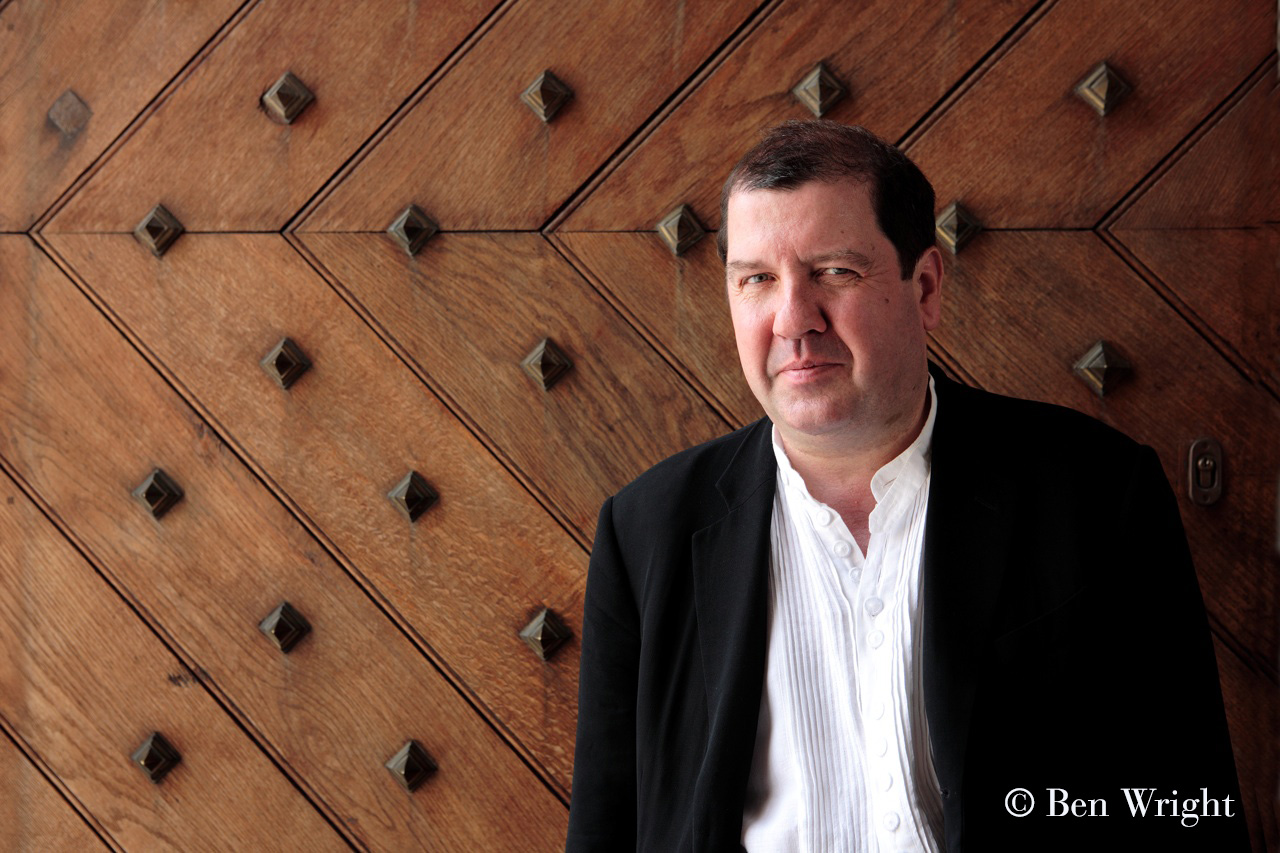
Certainly Ivor Bolton is one of the conductors who has very frequently performed the piano concerto with famous pianists. Currently he is head conductor of the Mozarteum-Orchester Salzburg. I had the very special pleasure of speaking with him during the „Mozart-Week“ in January 2010 in Salzburg, and was able to question him on aspects of Schumann’s piano concerto from the conductor’s view.
Ivor Bolton is not only a magnificent musician; he is equally magnificent to converse with. I learned so much from him, not only regarding Opus 54. Here you have the opportunity to listen to the (much shortened) recording of our conversation (in English):
March 1, 2010
Dear Readers of the Schumann Forum 2010,
Spontaneously I can only think of three years in music history when two composers of outstanding genius were born within the same year: 1685 (Bach and Händel), 1813 (Wagner and Verdi), and, certainly: 1810. Of course, not only Robert Schumann was born 200 years ago, but also Frédéric Chopin. And, because Chopin claims his birthday is March 1, 1810 (his birth certificate, contrarily, states February 22) March in the Schumann Forum is majorly dedicated to one of the greatest composers ever: Chopin.
I asked some exceptional pianists of our time about their personal feelings towards Schumann and Chopin. The answers, can be found here: "9 questions for ..."
Robert Schumann was significantly quick to realize the artistic standing of his peer, the aspiring composer recently relocated from Poland to Paris:
“Chapeau, Gentlemen, a genius!“
Whosoever is searching for more exact and detailed information on the mutual approach of these two geniuses, Schumann and Chopin, both born 1810, or even more precisely, whosoever is searching for sound and reliable information on Chopin’s life and works on the internet, I would like to refer to the excellent » homepage of the Warsaw „Fryderyk Chopin Institut“. The language options are Polish and English. (Regarding Schumann I can only point you to the wonderful “calendar” for exhilarating finds on 27. September 1835, 6. October 1835 and the days between 11. and 14. September 1836).
Ever since our company was founded Chopin has been one of the major composers in the G. Henle Verlag catalogue. As early as 1970, we had completed almost the full scope of his piano works in Urtext. Our editor at the time, Dr. Ewald Zimmermann, was awarded the Polish Badge of Culture, and others also, for his endeavours in uncovering the original and correct music by Chopin.
Meanwhile, of course, much has been researched about and around the existing Chopin autographs, the complex history of his music, and various aspects of philological detail. I hope to be able to offer highly interesting aspects on the topic in the March 15. edition of the Schumann Forum 2010. And I can also promise you, in two weeks, a very special new publication by G. Henle Verlag, in honour of Chopin’s 200th birthday anniversary.
However, today the focus is on a true Chopin rarity:
A few weeks ago G. Henle Verlag published a piano piece of Chopin’s that might only be known to very few musicians. And not even a simple piano piece for diversion and casual entertainment. No; rather a veritably large piano sonata in four movements.
G. Henle Verlag proudly presents the first Urtext edition of Frédéric Chopin’s first Piano Sonata in c minor, op. 4:
Further editions of this title
We at Henle are convinced that this early apprentice piece, written by the young Frédéric when he was probably 18, is a „sleeping beauty“ worthy of finally being awakened from its deep slumber. Perhaps it needed a good Urtext edition to find its way to the music academies and concert stages (beginners and unprofessional piano enthusiasts will despair; this piece is a surprising technical and musical challenge!)
My colleague, Dr. Norbert Müllemann, was, together with Sarah Gerbracht, the musicological editor of this edition. Last week he discussed the piece with pianist Andreas Groethuysen who provided the fingerings. Andreas Groethuysen was intensely involved in this piece, and felt compelled to state:
“Chopin was simply a genius, even at 18!“
And: “Any new edition published by Henle should be regarded as a signal to musicians.“
The entire, highly knowledgeable conversation (in German language) was recorded, and can be listened to here. It starts with a short part of the beginning of the sonata:
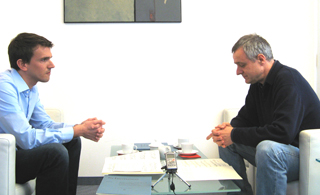
Dr. Norbert Müllemann and Andreas Groethuysen
Not long ago I happened to read that Chopin’s favourite colour was „slate blue“. Just imagine – even the cover alone would have caused Chopin to appreciate our Henle Urtext editions.
However, what must certainly have been of much greater importance to Chopin is the true and exact reproduction of his music. It is known, and reliably so, that he himself never twice performed his own pieces identically, and, by improvising, consistently added new vivacity to his compositions. But in matters of print he was very keen on details; this is evident especially from his meticulous autographs, the copies corrected by himself, and his correspondence with his publishers.
The reason we, as editors of his music, still have a difficult time with Chopin is that he tended to publish his works simultaneously with different publishers - in France, England Germany – and seldom left us with one definite and authoritative version of a piece to rely on and refer to.
Rather, the handwritten clean copies that Chopin forwarded to the individual publishers differed. In addition, the engravers of course would occasionally make mistakes that were not discovered by Chopin or his assistants. As a result most of Chopin’s works exist in two or three authorized editions that unfortunately are not identical in detail. What to do?
In such cases, one must have much experience with the history of Chopin’s works in order to come to the right conclusions and make correct decisions. Should you, dear Readers, wish to gain more insight into the intricacies of such differing print editions I can recommend a visit to the following site: it’s the fantastic offering of » „CFEO“ (Chopin’s First Editions Online), where you are able to leaf through all these early prints to your heart’s content.
But at this point at the latest, a wonderful, only recently published standard reference work absolutely needs to be mentioned. It is a must-read for any Chopin enthusiast and every bibliographically interested musician or musicologist:
» Christophe Grabowski, John Rink: Annotated Catalogue of Chopin’s First Editions. Cambridge, {Cambridge University Press} 2010
And I’d like to mention three other digital offerings that might not yet be known to many:
- Firstly, the „University of London, Royal Holloway“, led by Professor Dr. John Rink, is working on a digital account and commentary of the complete Chopin sources (autographs and printed editions). It is to be expected that this singular project will soon offer much more precise information than the both currently introduced prototypes of Préludes from Opus 28:
» www.ocve.org.uk - Secondly the „Fryderyk Chopin Institut“ in Warsaw is planning a complete digitalization of Chopin’s autographs, his correspondence and other memorabilia as a part of the „National Digital Library“. These Chopin manuscripts have been accepted to the » „Memory of the World“-Programme of Unesco. [Link no longer available] So I would like to recommend that all Chopin fans visit this site from time to time to watch it develop
» www.chopin.nifc.pl - Thirdly, you can become better acquainted with Frédéric Chopin via a very well made, informative and quite complete multimedia Chopin encyclopedia (in Polish and English language):
» www.chopin.pl
It is both an obligation and a matter of course for an Urtext publisher to reproduce the works of a composer as accurately as is at all possible. This is a strong demand, and can in Chopin’s case only be achieved with very much effort. But at Henle we willingly accept the responsibility.
Several years ago musicologist Dr. Norbert Müllemann joined our editing staff. He wrote a much acknowledged thesis on Chopin’s early autographs. In the course of the years to come he will consistently and diligently review all of the Chopin Urtext editions in the Henle catalogue and, ultimately, we will publish new editions. The » Préludes and » Ballades have already been released. The Grande Polonaise op. 53 is to follow in a new Henle edition.
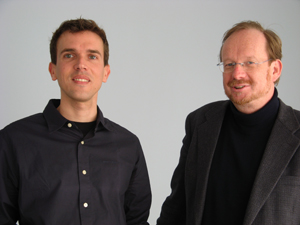
Dr. Norbert Müllemann and Dr. Wolf-Dieter Seiffert
On 4. March, 2010 I spoke to Dr. Müllemann and would like to present our conversation in two separate parts:
» You can read the first part of our conversation in which we talk about the philological challenges in connection with the Chopin sources.
The second part of our talk is available as an audio file (in German). » Click here to read the English abstract. In this second part I discuss with Dr. Müllemann the impressions he was able to gather regarding the current research situation at the recent Chopin Conference in Warsaw which he attended and where he delivered a speech:
And now, dear Readers it is high time we bring our attention back to the main person this forum is dedicated to, Robert Schumann.
Chopin’s own autograph of his Polonaise in E flat major op. 53. This autograph contains all the characteristic features of the mature artist and is a pure delight. The original is in the Pierpont Morgan Library, New York.
Of course, our new printed facsimile is superior in quality and contains a critical commentary. The commentary also reveals why we claim that opus 53 provides a link between Chopin and Schumann: Clara Schumann was once the proud owner of Chopin’s autograph which she highly treasured. It was the first and only Polonaise that she included in her piano repertoire.
Further editions of this title
April 2010
A cosmos of its own: Robert Schumann’s piano Œuvre!
I am happy to admit: I admire Schumann’s piano works and feel that they are almost second to none. To listen to this music (or also to play it on the piano – in my case rather as a dilettante) immediately elates and enthuses me. I have occupied myself with Schumann’s piano works for many years now, only to discover ever new aspects. This oeuvre puts you in open-mouthed (and open-eared) awe, like a stargazer who cannot move his eyes from the sight of the twinkling stars at night. Robert Schumann’s piano Œuvre: a musical cosmos, equalled by no other.
Lastly, this is one of the reasons I started the ”Schumann-Forum 2010“. It is my aim, dear readers, to share my passion and curiosity for Schumann’s works with you. Therefore I will offer you lots of information and entertainment during the course of the year. I am convinced anyone truly interested in classical music, and in Schumann especially, will find that Henle has much to offer, and even surprisingly new things among them.
But there is another reason why I started this kind of a “Schumann blog“ in the Schumann year 2010. I know that many classical music enthusiasts love the Fantasie in C major op. 17, that they cherish Schumann’s “Kreisleriana“ op. 16, and that they are happy when Schumann’s “Carnaval“ op. 9 is listed on a pianist’s programme. But Schumann composed so much more for piano, and most of his pieces are as good as the three I just mentioned. Sadly, too few lovers of classical music are familiar with these pieces.
Even great pianists prefer the well-worn paths – yes, these are wonderful paths! But it is exactly as the famous (Schumann) pianist András Schiff confided to me: Apart from a few often played pieces, the “major part of his piano works are largely neglected”. (You will find the complete comments from András Schiff here)
As a publisher of the major piano repertoires Henle has a good overview of what pianists the world over are interested in. The anniversary year 2010 seems to juxtapose the two great piano giants of the 19th century and provokes competition. I believe that as early as right now, in April 2010, I can foresee the outcome: Chopin will by far outdistance Schumann in regards to sales figures.
Therefore, I am going to present different piano pieces of Schumann’s during the course of the next months, and I will also introduce different recordings and compare them. I will focus on the lesser known works, but of course I will not neglect the old warhorses. And I will conduct interviews especially with pianists currently recording Schumann, or who have only recently published new Schumann recordings.
But today, let us look at naked facts and figures that are, even without comment, massively impressive: Schumann wrote 38 complete works for piano solo (36 of which have opus numbers). The Henle catalogue has contained Schumann for decades, but we are only since this month able to offer his complete piano works in Urtext. That means that from now on the Henle catalogue boasts 38 single Schumann editions (one volume per opus; with the exception of the „Paganini Variations“ op. 3 und 10: they are combined only in one volume. On the other hand, you will find the two “best-sellers” op. 15 and 68 both seperate and combined; hence we have the total of 38 volumes).
In addition, we can offer the collected piano works in a set of 6 volumes, available in the traditional blue paperback binding, or fine cloth binding. The collection is also available as a study score in six small-scale volumes. That makes a grand total of 56 volumes of music. (Schumann experts will appreciate this number.)
A few days ago we positioned all our Schumann piano editions on the stairs in our building and took a photo.
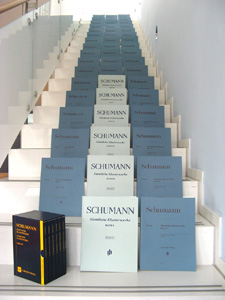
Interested in statistics? The Henle editions fill about 0,60 running metres of shelf space, laid out top to bottom you role out a 17 metre long carpet with a total weight of about 25 kg. But what will interest musicians more: the volumes contain exactly 1,216 pages of music (in Henle engraving quality), that’s about 15 hours of consistent play. I collected the bibliographical data and play times for each opus. The information is here.
The Henle website offers a complete and current compendium of Schumann’s piano oeuvre. And, more important, the facts are musicologically proven. So, it is not without pride that I say Henle is unique in what they have to offer special Schumann enthusiasts.
Of course, the diverse offerings on our website are also intended to awaken your interest to purchase the music from your dealer.
I am equally proud of my colleagues at Henle. They succeeded in meeting deadlines and time limits to ensure that the new Schumann Urtext editions would be printed and available in time for the Musikmesse (music fair) in Frankfurt (24.-27. March 2010). It was a remarkable feat and an exertion. We are all exhausted and very, very happy to have accomplished the impossible.
But now it is high time to allow the critical editor of all our Schumann editions to speak. Many years ago Dr. Ernst Herttrich commenced the Herculean task of completely re-editing and new-editing Schumann’s piano works for Henle, opus for opus. Allow me to express my gratitude for this truly great achievement. When we phoned Dr. Herttrich, who lives in Berlin, to announce the successful release of the editions in time for the Musikmesse, I think we heard the sound of the weight falling off his shoulder.
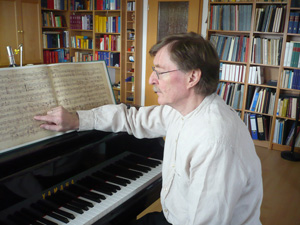
Dr. Ernst Herttrich
I talked at length with Dr. Herttrich about his work as a musicological editor and about the differences between the old and new Henle Urtext editions of Schumann. The transcript of the conversation (in German and English) is divided into two parts. You may read the first part here. In the second and last part of the interview Dr Herttrich especially comments on the peculiarity of pieces handed down in two different versions, both acknowledged by Schumann. In most cases Henle publishes both versions, offering pianists and listeners interesting new aspects. Find out more here.
The new Schumann edition in six volumes which contains all, really ALL of Schumann’s piano works, has caused quite a stir in the world of piano musicians. This was made evident also by the demand for the Schumann edition at the Frankfurt Musikmesse that closed just two weeks ago end of March. Dr. Norbert Gertsch, our head of publishing and main person responsible for the timely completion of this giant-size project, is proud of his colleagues in the editing department, production and sales. I invited him to explain why we think that the new Schumann edition surpasses not only the former editions published by Henle, but all other editions available on the world market. We recorded our conversation for the „Schumann-Forum 2010“. You can listen to our conversation (in German language):
or read the written summary which is available in German and English. I wrote this précis because I believe that the information Dr. Gertsch gives is of special importance to musicians. Summary
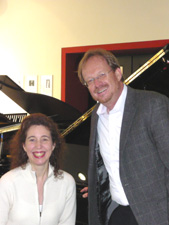
Angela Hewitt and Dr. Wolf-Dieter Seiffert
A few days ago I had the honour to meet with the wonderful Canadian pianist Angela Hewitt, „Artist of the Year 2006“ (Gramophone Magazine) and “2010 Instrumentalist of the Year” (MIDEM Classical Awards). Her » homepage diary contains an entry from 6. November, 2009: “I was never so happy as when playing an all-Schumann programme and I think that is really true. I adore his music and it gives me the chance to say so much.” Find out here why Angela Hewitt sometimes enjoys imagining that she is Clara Schumann ... and other things more:
Soon Ms Hewitt will record her second Schumann CD, presumably to be released in 2011. Her first Schumann CD, published in 2007, on which she plays the first Piano Sonata op. 11 and the Humoreske B Flat major op. 20 was rightly highly recognized. Attila Csampai wrote: „Now (at last) that wonderfully sensitive piano poet from Toronto has opened the doors to German romanticism, and has delivered, with two of Schumann’s less popular early works, a perfect document of her pianistic grandeur and highly developed sound sense“.
June 15, 2010
I know, it’s a hot-button issue! Many musicians do not at all want to be bothered with metronome markings, even if it was the composer himself who dictated them. The great conductor Sergiu Celibidache once expressed the issue in wonderfully pointed words:
“You cannot define tempo. Tempo has no existence of its own, so it can be neither wrong nor right. What the world has not yet understood: tempo has nothing to do with speed [...]. There is no singular tempo that you can take from Berlin to London [...]. Metronome marking ,92’. What is 92? [...] It is idiocy! Every concert hall, every piece, every movement has its own absolute tempo, defining exactly this situation – and no other.“
(From: Stenographische Umarmung. Sergiu Celibidache beim Wort genommen, Con Brio Verlag 2002).
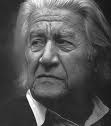
Now however, it undoubtedly applies that the character of a piece is quite decisively determined by the basic choice of tempo, regardless of the place of performance. A flowing basic tempo simply has a different effect than a halting one. For this reason the topic discussed in the Schumann Forum 2010 today will be of special interest to musicians.
In accordance with our Urtext philosophy we regard the original metronome markings as crucially important and worthy of acknowledgment, and of course they are included in our editions. Thankfully the Schumann research centre Robert-Schumann-Forschungsstelle e. V. Düsseldorf collected all of Schumann’s metronome markings and provided us with a very useful overview (Schumann did not add metronome markings to all those works that do not appear in this list).
Schumann’s metronome markings are at least as much subject to dispute in their validity and bindingness as Beethoven’s. We tend to regard some as too fast, others as much too slow. I am thoroughly convinced that it is worthwhile not to ignore these instructions, and that quite to the contrary, they afford a closer look. They are a benefit actually, and not a bother. (And should one still choose to play Schumann’s pieces in a distinctly different tempo than intended by the composer, at least it will be a conscious action).
For this forum I conducted an interview with one of the best experts on Schumann, Dr. Michael Struck (musicologist, pianist and 2009 award winner of the “Schumann Preis der Stadt Zwickau”). He has applied himself intensely to the subjectz of Schumann's metronome markings and published several much-acknowledged articles in the past years. Dr. Struck would like to encourage musicians to take Schumann’s metronome markings more seriously, for they are neither wrong nor unplayable. Schumann (and his contemporaries) interpreted “slow” as a tempo much more fluent and in motion than we do today.
Struck claims that in ignoring Schumann’s tempo instructions the musician is denying himself the opportunity to make an exciting new experience. In the phone interview (in German) I asked Dr. Struck the decisive and principal question about the correctness and authenticity of the Schumann’s metronome markings.
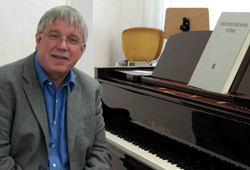
You, dear Readers, may also read a summary of the interview (German/English) here
Michael Struck produced a radio broadcast on the subject of the metronome markings for one of the national German broadcasters (NDR; it was first broadcast on 11. November 2006; it is only available in German). He goes very deeply into the “Kinderszenen“ (and in the end plays a piece in its original tempo). With the kind permission of the NDR I am able to let you listen to an 11-minute clip of this highly recommendable recording.
May 2010
In the lovely month of May, dear Readers, I would like to take a precise look at two piano pieces of Schumann. They are so far apart from each other they couldn’t possibly be more different. I am going to talk about "The Prophet Bird" from "Waldszenen" ("Forest Scenes") op. 82, and the Toccata op. 7 in C major that I will introduce on 15. May. And herewith we are able to immediately understand the gigantic intellectual, compositional and also technical range of Schumann’s piano oeuvre. It reaches from the introverted and restless piano piece of positively religious depth – "doable" for the well-practiced pianist – to the "unplayable" Toccata that expresses nearly inexhaustible energy and uplifting, unclouded enjoyment of life.

I hope that the following pages bear new information even to the many professional pianists among my readers.
"The Prophet Bird"
Schumann’s "Forest Scenes" op. 82 were first published in print 160 years ago (1850). Today this stroll through the "musically enchanted forest" (labeled as such by a 19th century critic) is often a bit condescendingly commented on by some. These are the people who greatly admire the young, innovative, genial Schumann, and they are not willing to equally appreciate the more subtle "Forest Scenes". Number 7 is certainly an exception: the mysterious, unbelievably poetic "Prophet Bird" continues to magnetize pianists and music listeners to date.
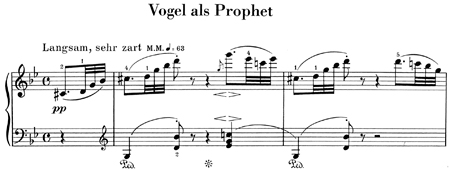
At the risk of sounding nitpickingly arrogant I must say that, in my opinion, only very few recordings of "The Prophet Bird" are truly convincing. There are wonderful light and playful recordings like those by Claudio Arrau or Alfred Cortot, dreamy ones exist by Arthur Rubinstein or Mayra Hess, and then there are also extremely willful historic recordings by Vladimir de Pachmann or the violin adaptation by Jascha Heifetz. Those are all valuable examples of the reception history of the piece, and certainly worth hearing in to (all of the above mentioned and many more can be found on YouTube). But as far as I am concerned they all lack one thing, they are not true to the original text.
For, Schumann’s "Prophet Bird" differs from (almost) all other Schumann pieces in that it uses the right (and left) pedal to determine the piano sound. Schumann was pedantic in his notation especially of the pedal markings in this piece:
Click on the following link to read Schumann’s autograph. There can be no doubt as to Schumann’s intentions, and the Henle Urtext edition follows his instructions.
Schumann’s autograph of the "Forest Scenes" is taken from the Henle facsimile edition.
Consequently, Schumann’s pedal markings are an intended and important part of the composition. But hardly any musician respects them. Next to Clara Haskil’s recording (also on YouTube) that many piano enthusiasts rightly favor, there are at least (only?) two further recordings that not only follow Schumann’s original intentions, including the important and sophisticated pedal markings, but are also wonderfully expressive.
One was recently released on CD; a recording by Andreas Staier [Robert Schumann: "Hommage à Bach". Harmonia Mundi France HMC 901989] whose play on an Erard grand piano succeeds in communicating the enchantment of this piece. The other recording is by Wilhelm Backhaus. There are both a studio and a live recording by Backhaus, both made in the 1950s. Everything here is perfect. Backhaus’ live CD recording is published by the label Profil (no. PRF 07006) and it’s a must-have for every piano enthusiast; it also includes a spectacular performance of the "Hammerklavier Sonata").
Of course I am not familiar with all of the almost 50 recordings of the "Prophet Bird" listed at www.arkivmusic.com (the worldwide number one source for classical recordings). But I have listened to very many of them, and apart from Staier, no one has recently played it as "right" as Backhaus did.
For all of you interested in finding out how and why Schumann uses the pedal as such an important component of "The Prophet Bird", and for all those piano players also interested in other practical pointers (fingerings and solutions for the falsely notated main theme) I wrote the following essay. It focuses on the music itself, but is of course also my personal interpretation. In the G major middle section Robert Schumann quotes another piece and – for the first time in the history of Schumann research – I believe to have found the evidence to trace this quote correctly:
I transferred the ideas from this essay into the three sheets of music from the Henle edition. If you wish to seriously concern yourself with Schumann’s "The Prophet Bird" at the piano please print these pages out:
„Vogel als Prophet“ with annotations
And in honor of this first day of May I would like to conjure a funny bird on your screen (to see the bird you will unfortunately need to view an advert first):
The Thematic Catalogue of Robert Schumann's Works
June 1, 2010
Dear Mr Schumann,
In only a few short days the entire musical world will celebrate your 200th birthday. In your honour, festivals will be staged everywhere, from Düsseldorf, Germany to Mumbai, India, to Luzern, Switzerland. For a good overview of the events (especially in Germany) I suggest a visit to: www.schumannjahr2010.de. Newspapers and journals (e.g. the June issue of the German music magazine FonoForum) will report on your immortal music and your eventful life. All over the world the air will be filled with the sound of your music.
From the bottom of my heart I would today like to thank you for the rich and more than generous musical gift you bestowed on us, and I would like to congratulate you on your 200th birthday. Of course I am not empty-handed, I have a gift in return. Please read on.
Since its foundation G. Henle Verlag has benefited from your oeuvre. Over the years, however, we have also invested much effort and money in publishing your complete piano works from Opus 1 to the posthumous Variations in E flat major in newly revised, philologically and aesthetically highly satisfying editions.
Today, however, I wish to recommend a very special book of ours. I am confident that it will excite you to the same extent it has many of our customers who purchased it: the Thematic Catalogue of Robert Schumann’s Works.
It was published seven years ago and is since regarded to be THE reference work for your musical oeuvre. Just as you had always wished it contains an exact list of all of your compositions, those with and without an opus number, those that you completed and those that were left us only in fragments; commented in detail, explained and made accessible through numerous cross-references and indices. Our author, Margit McCorkle, invested ten years of her life into this book. The Peter Klöckner Foundation provided a stately amount to support the funding.
Dear Mr Schumann, please have a look at our truly substantial collection of information on the Catalogue of Robert Schumann’s Works. Simply click on "Details" or on the image of the book cover.
Of course the book is not my gift to you. Rather, the gift is a novelty. Please “unpack” it and study it. I do hope very much that you will enjoy it, as do especially the author of the Thematic Catalogue of Robert Schumann’s Works, and the entire staff of various Schumann Research Institutes. They joined in work for this special gift.
For, from today on, all the new information collected since the first publication of the Thematic Catalogue of Robert Schumann’s Works will be posted on the website of G. Henle Verlag. These “addenda” and “corrigenda” are immediately freely accessible for all online-visitors and will supply a current record of new findings for the catalogue of works, all in regards to your compositions. I know of no other composer’s catalogue of works that makes use of this innovative method to consistently remain “up-to-date”.

Here you have the opportunity to listen to the (English language) phone interview I led with Mrs McCorkle last week. I had the opportunity to talk with her about the spirit and purpose of this gift on the occasion of your 200th birthday:
Now I must close this birthday letter. But you may be assured that, especially in June 2010, millions of people will enjoy your music and feel refreshed by it, and that this happiness will not cease.
With utmost gratitude
I remain
Wolf-Dieter Seiffert
PS: Of course I would be delighted if you would chance to revisit the Schumann Forum 2010 from time to time. Every two weeks I issue new information on topics relating to your oeuvre.
Further editions of this title
May 15, 2010
I have been promising a sensation of sorts, and here finally it is: Schumann’s famous Toccata in C major op. 7 (1834) in a hitherto almost unknown early version dated 1830. Thanks to the generosity of the Pierpont Morgan Library in New York we had access to Schumann’s original autograph and were able to edit it with a strict eye to Urtext compliance. Just a few weeks ago we published it in print.
Schumann’s handwritten early version is by no means simply a slightly differing draft of the actual much loved print version of the Toccata op. 7. "The correspondences between the two versions are so few that one must actually regard the print version as a new composition" – thus the editor Dr. Ernst Herttrich in his preface of our Henle Urtext edition (to view the entire preface and / or critical commentary go here)
In the following, dear Readers, I would like to give you a short introduction to this G. Henle Verlag edition of a Schumann piece (as an add-on you will find a list of links to all of the audio and video recordings of the familiar Toccata in C major op. 7 that I could find.
Of course I do hope that especially those of you who play the piano will purchase the new Henle edition in order to make your own opinion.
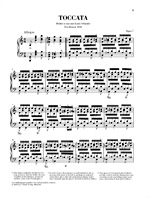
The manuscript of the premiere early version of the Toccata of 1830 – Schumann significantly titled it "Exercice" – was formerly owned by the great pianist Alfred Cortot. Cortot did not only bequeath us with immortal sound recordings of many Schumann pieces (unfortunately the Toccata is not among them), but he also edited the complete Schumann piano works for the publishing firm Salabert within the collection "Les Éditions de travail". Interestingly, in the respective edition in this collection (book number EMS 5446/D1) Cortot only included the familiar version from 1834. The Henle Urtext edition has both versions printed one after the other.
The so-called early version of the Toccata op. 7 ("Exercice") is a fascinating piece. Schumann’s study mate from Heidelberg, Anton Theodor Töpken, reports that Schumann himself played it "quite often and peculiarly, in a calm and moderate tempo." Of course it does have, apart from being written in the same key, C major, and sonata form, significant congruencies with the later "Toccata". Both movements are undoubtedly bravuras, impressive beyond measure. They both originate from the spirit of piano exercises, peppered with frightfully difficult demands to even the best of piano technicians. But they are by no means "etudes", because they are far too original for that kind of classification. Both movements sound like an unstoppable forward-pushing (steam) engine, because there is only one form of motion. Instead of versatile rhythms you have continuous, uninterrupted sixteenth notes. Without pause or rest, inexorable, forceful, in other words with motor energy. Both movements start, after a short opening curtain, with the same characteristic double change of the fingers 1+5 → 2+4 → 1+5 → 2+4 etc. of the right hand. And both pieces have the difficult-to-play repeated octaves in the middle passage in a minor, a passage that can only really be mastered easily by true piano virtuosos.
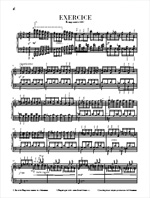
It might not demand so much musicality to play Schumann’s Toccata and the early version thereof, the "Exercice" – but, yes, you need to be a "piano virtuoso". Because you need skills that are otherwise only necessary in professional sports: tremendous strength and simultaneously a looseness of the limbs, tremendous endurance, extraordinary jumping skills and, finally, nerves made of steel. For this reason we seldom hear the Toccata performed in concert halls (not few of the great pianists of yesterday and today never performed the Toccata), but it is often played in music academies. It is an ideal "training piece" for young, prospective pianists.
And this applies even more to the "Exercice". The technical difficulties are positively compact, and, in comparison to the Toccata, increased. The short, song-like points of rest in the Toccata are not yet there, they are completely missing. One example is the friendly, dotted melody (first introduced in m44 ff.). Only a very detailed comparison would draw an exact picture, but I must leave this up to you. There is not enough space here. But what is clear is that this piece encloses into a sweeping musical river very many extreme finger exercises that are incredibly demanding to the highly skilled piano player.
The "Toccata" is 100 measures longer than the "Exercice". And not because it accumulates more technical difficulties, but rather, because the composition is more sophisticated and balanced than the "Exercice". This applies especially to the harmonic professions that, in the early version, tend to remind one of certain uninspiring modulation exercises, though unusually fast in tempo. The very beginning already does not savour the first stroke of the C major space the way the "Toccata" does; after only 4 measures we have been moved to E flat major (the Toccata allows 14 measures).
And, since we are already quietly criticising the "Exercice", let me add that in many instances it lacks the measured rhythmic pulsation of the "Toccata", where the last finger of the left hand beautifully pulls through: short – long – short / short – long – short etc. This is magnificently compressed and already set on track in the first very strong opening accords. In contrast, Schumann starts the "Exercice" with a veritably presumptuous accord cascade. Here the composer attempts to surprise rather than convince. And this follows through to the end, which in the Toccata quietly fades (criticized by Friedrich Wieck), while the "Exercice" ends just as it began, with a stroke of thunder.
And yet, the early version is a stroke of genius, and especially an alternative draft to the etudes of his time, that Schumann regarded as stultifying. How intensely, almost self-destructively Schumann trained his fingers is commonly known. Friedrich Wieck himself maintained that he wanted to make him into an even greater virtuoso and musician than Moscheles and Hummel, two of the most greatly admired musicians of the time. (There are certainly references to Hummel’s piano sonata op. 81.) Wieck was obviously most successful in the technical education of his daughter Clara. With Schumann he was doomed to failure. For the seed of composition-artist was already planted in Schumann, he was never the born technician. One almost has the impression that the chains he had laid himself sprung when Schumann finally ended his career as a performing pianist. And that was his breakthrough to his true fulfilment. "One should hear the music from inside out", he entered in his journal on June 5, 1831! Barely a year later, his career as a piano virtuoso came to an end, due to irreparable physiological problems with his right middle finger.
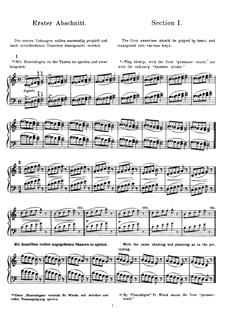
If you are interested in Wieck’s numerous systematic finger exercises I advise you take a look at the "Klavierstudien" he published. You will find there several models that surface in Schumann’s "Exercice" and "Toccata" in variations and more sophisticated form.
The transformation of the unpolished diamond "Exercice" (1830) to the sophisticated virtuoso-"Toccata" (1834) symptomatically occurs exactly in during those decisive years of Schumann’s conversion to greatness. The knowledge of both works, therefore, allows us on a musical level to better understand the development and growth of Schumann. In these few years he matured and transformed himself from the prospective skilled pianist who could also compose, to the composer who could play the piano. A crucial, no THE crucial difference.
Lastly, Schumann already points out the intrinsic difference of the two pieces in his titles. The originally youthful and show-offy "Exercice" is transformed to a "less wild, more polite" Toccata (Schumann to Töpken on 18. August, 1834). Thus he actually positioned the work (and himself as composer) in the larger context of music history that reaches from the Claviermusik of the Early Baroque period (take Frescobaldi, for example) to many of Bach’s works (I am always reminded of the Prelude in C minor from the Well Tempered Piano BWV 847) and lastly to Debussy, Ravel, Chatschaturjan and Prokofiev, to name only a few famous examples. You will find an extraordinarily rich "Toccata collection" here )
And now, after so many words, here is a list that certainly some of you will find highly enjoyable. Over the past months I have continuously collected all of the Toccata recordings my fingers on the keyboard of my computer were able to locate. (Of course a recording of the "Exercice" does not yet exist, since it was only recently published by Henle). If you notice anything missing in my list, I would be grateful if you would be so kind and notify me by e-mail (davidsbuendler@henle.com)]. Then, over time, the readers of the Schumann Forum 2010 would help me to complete my list, that today includes 57 items. Thank you!
In many cases the list contains direct links to the recording (thanks to YouTube). Or else the record labels offer online audio excerpts.
I admire all of these pianists. Unquestionably they rise to the challenge of one of the most difficult piano pieces of Schumann, and the entire piano literature. I am especially impressed by those performances where the players unfold great motor energy, holding the initial tempo and still offering a stimulating play of all the notes. Without a doubt Tang Ying from China is speed master. To the very sweaty end he succeeds in keeping the unbelievable tempo that was once set – but not held - by the legendary Simon Barer. However, other recordings overwhelm and excite me even more. (I marked my favourites that I strongly suggest you listen to in blue colour on the list.)
To conclude I would like to point you to one of the recordings from the Olymp of Schumann Toccatas: György Cziffra is indeed the master of all disciplines. He seems to genuinely enjoy the challenge of this horrendously difficult, wonderfully forceful, modern, vital piece. He plays it with the persistent drive it demands, and still maintains his ease.
Further editions of this title
July 15, 2010
How “difficult“ to play are Schumann’s piano pieces actually? Not only technically, but also from a musical aspect? I assume, dear piano players among my readers, that your answers to my question would for the most part be quite similar. Most of Schumann’s works are for very practiced pianists, only few pieces can be mastered by beginners, even with diligent practice. I wanted have a closer look and asked Rolf Koenen, who is a highly experienced pianist and professor of piano in Berlin, for guidance. The original idea of determining the level of difficulty for each of Schumann’s piano works and ordering them accordingly soon became a major undertaking; meanwhile Rolf Koenen is entrusted with the challenging task of classifying the complete G. Henle piano catalogue by level of difficulty from 1 (= very easy) to 9 (= very difficult). By the end of the Schumann and Chopin year 2010 Professor Koenen will have worked his way through many thousands of individual movements. Already today visitors to our homepage will find the result of his impressive work so far, the highlight of which is at this point the classification of the complete works of Schumann and Chopin.
How to find the classifications? Quite simply. On our homepage you go to “catalogue“, select a composer and/or a specific title (i.e. Schumann, Album für die Jugend), click on it. The sub-category “levels of difficulty” (also accessible via “contents”) leads you to a detailed overview of the contents of the respective volume with indications of the level of difficulty for each piece (in our example the individual pieces that together form “Album for the Young”) as determined by Rolf Koenen.
An information button directs you to the scale where the categories 1–9 are described.
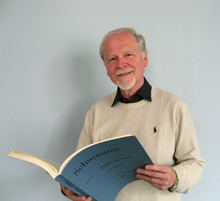
Here you will also find a short explanation by Rolf Koenen, commenting on the way he intends the scale from 1-9 to be understood and what they mean. I met with Professor Koenen and interviewed him (in German) on his valuable, albeit extremely time-consuming, work. In the interview he explains which pieces he classified individually and which works he chose to regard as a unit and, therefore, to assign to one category of the scale in its entirety. We at Henle are extremely grateful to Rolf Koenen for his valuable work. And I am sure that many music teachers, whether engaged in private or institutional teaching, and also music enthusiasts, will accept and apply this classification of our piano repertoire and put it to good use. Please click on the link to listen to my conversation with Rolf Koenen:
But now, back to Robert Schumann’s piano works. How difficult are they? Can I, the amateur, find something satisfying and rewarding to play, or is everything “unplayable“ for me?
Well, to answer this question I visited the online-catalogue on the Henle homepage and entered a combined search for Schumann under “composer” and piano for two hands under “instrument”. The search result is quite pleasing for the relatively gifted pianist. Granted, many pieces (among them the well-known cycles) range on the higher levels of the scale “very difficult” (= 7-9). On the other hand, there are some few “easy” pieces, not only from “Album for the Young” op. 68, but also other pieces. “Children’s Scenes” op. 15 (nos. 1 and 13), “Three Piano Sonatas for the Young” op. 118, no. 1 is “easy” (category 3), also “Wiegenliedchen” and the Larghetto from “Album Leaves” op. 124. However, that more or less completes the easy category. What is truly surprising (at least to me) is that there are many “medium difficult” pieces by Schumann (categories 4-6). The ambitious amateur will encounter several pieces that he can master, and not only that, there are pieces that allow you to reach that level of accomplishment where you play with true joy. Here is a list of those pieces:
- „Papillons“ op. 2
- „Intermezzi“ op. 4
- some of the Fantasy Pieces op. 12
- the larger part of “Children’s Scenes” op. 15
- “Arabesque” op. 18 (that lovely piece!)
- “Flower Piece” op. 19
- the middle piece from “Three Romances” op. 28
- much from “Album for the Young” op. 68
- “Forest Scenes” op. 82
- the by far larger part of “Coloured Leaves” op. 99
- “Three Piano Sonatas for the Young” op. 118 nos. 2 and 3
- most of “Album Leaves” op. 124
- last, but not least “Seven Piano Pieces in Fughetta Form” op. 126
So, we see, even for the amateur Schumann does have some worthwhile and playable pieces to offer!
July 1, 2010

This is probably Robert Schumann’s most famous composition. The title alone reads as a definition and characterization of “romanticism”. The epitome of the peak of the romantic period in German music history. How many hundreds of pianists have played Schumann’s “Träumerei” so often, so beautifully and above all soooooo slowly! A strong tradition that, whether consciously or subconsciously, you are compelled to follow when you sit down to play the “Träumerei” on your own piano.
And yet, the snail’s pace at which we are accustomed to hearing Schumann’s “Träumerei” is a great mistake. A hereditary defect (that originated from Clara Schumann). There are considerable, and truly convincing reasons against the slow tempo. Let me elaborate.
In my previous entry on the Schumann Forum (June 15, see below) I presented an overview of all of Schumann’s authentic metronome markings. I quoted a leading expert on Schumann who concludes that all of Schumann’s tempo instructions should be taken seriously and regarded at least as relevant pointers. It is certain that they were intended by Schumann and were not mistakenly noted. Today, as a sort of acid test, I would like to present to you Schumann’s most famous piano piece, played as he intended, at “MM quarter note = 100”. Because the piece is traditionally played so slowly, today’s pianists reaction is to say that Schumann’s tempo is fantastically fast. Too fast. But, is it really too fast?
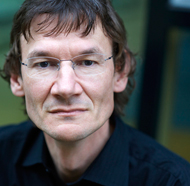
I asked Michael Schäfer, a wonderful pianist and professor of piano at the Musikhochschule in Munich, to play the “Träumerei” in the original tempo. Before you shake your head, please listen to the piece, played only for us, exclusively for our forum:
The pace is unaccustomed and disturbing. Because we are used to hearing it differently, and have learned to love it that way. But if it were the first time you listened to the “Träumerei”, then you wouldn’t be disturbed at all. You would hear a beautiful piano piece in fluent movement with a recurring main theme with versatile and harmonious variations. Delicate retardations and accelerations make the music talk to you. Andreas Staier has since recorded it similarly and I hear from different corners of the music world that increasingly more renowned pianists are beginning to take more heed to Schumann’s metronome markings, including those of the “Kinderszenen”. Their concerts and recordings, I am strongly convinced, will set a new tradition.
I interviewed Professor Schäfer and asked him how he felt at tempo 100, and was of course curious to hear his general opinion. His answer surprised me; he said he was very grateful for this “experiment”. He is now convinced that only the original tempo, or one very close to it, does the “little thing” (as Schumann himself called it) justice. So, in this case, the tradition is wrong.
Please listen in to Michael Schäfer’s sharp-witted and entirely convincing argumentation (in German language).
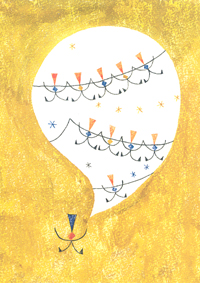
I summarized the most important points, all of them in favour of Schumann’s “MM quarter note = 100“ in the “Träumerei”.
I can only encourage all of the readers of this forum who themselves play the piano to try it out. Play the “Träumerei”, not as you usually do, in deep-sleep mode, but in the tempo intended by the author. Apart from the objective, artistic and no less also acoustic reasons introduced by Michael Schäfer I would like to point you to another aspect of the piece that is worth contemplation: the title. I am convinced that Schumann would have named his piece differently if he had intended a slow to very slow tempo; he would have given it the title “A Dream” and not “Reverie”. Where is the difference, you might ask? Please read my short essay, “From deep sleep to MM 100. Some thoughts on Robert Schumann’s „Träumerei“ (Reverie)”
August 1, 2010
This and the next entry on the Schumann Forum 2010 will focus on Schumann’s vocal music. The occasion for this topic is the recent release of Henle’s new Urtext edition of the “Liederkreis” Opus 39. Schumann took the poetry for these songs from Joseph Freiherr von Eichendorff.

Our edition is singular and differs from other publications not only because the music has been newly edited and improved - that is a matter of course. Rather, the volume contains the complete first version of the song cycle composed by Schumann in 1842. Schumann actually revised his “Liederkreis” in 1850 and had it reprinted in the version generally known today.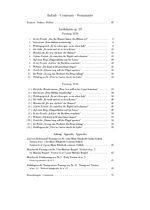
For the first time G. Henle Verlag offers readers the opportunity to visualize the differences and alterations in one volume. A detailed preface and a critical apparatus provide additional insight into the problematics of the two co-existing versions, and we even included some first publications, namely early authentic versions of “Mondnacht”, “Frühlingsnacht” and “Intermezzo” that never before appeared in print. This chart gives you an overview of the complete contents of the new Henle volume.
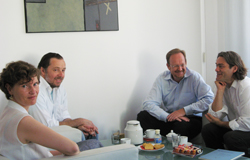
„My Favourite Cycle“ (Christian Gerhaher)
Christian Gerhaher, the world-famous baritone singer who lives near our offices in Munich, reveres Robert Schumann’s “Liederkreis“ op. 39 as the “highest summit of song composing”, and claims the “Liederkreis” as his favourite cycle. Reason enough for an invitation to Henle together with his congenial piano accompanist Gerold Huber. The interview was conducted by my colleague Dr. Annette Oppermann who is a member of the editing staff at Henle.
We had a very animated discussion that soon went deep into the heart of the matter. I have summarized our talk for you in writing. Please review my short précis (in English or German) here. I am convinced that all vocalists, all pianists interested in song, and of course all song and Gerhaher fans will discover new aspects and valuable insights: Abstract Gehrhaher
But it’s not my aim to deprive you of the original sound of our lively conversation. We had some highlights cut together for you in the media room that you will certainly enjoy listening to (only in German language):
The important role that Eichendoff’s poetry had for Schumann in general, and of course especially for the “Liederkreis“ op. 39 became evident several times in our talk with Christian Gerhaher and Gerold Huber. Why not, dear readers, make use of your summer leisure time to enjoy (for the first time, or again) Eichendorff’s wonderful poetry? Whosoever does not yet own a printed and nicely bound Eichendorff poetry volume should blush in shame and hasten to the next bookshop.
Further editions of this title
Mondnacht
Es war, als hätt’ der Himmel
Die Erde still geküßt,
Daß sie im Blüten-Schimmer
Von ihm nun träumen müßt’.
Die Luft ging durch die Felder,
Die Aehren wogten sacht,
Es rauschten leis die Wälder,
So sternklar war die Nacht.
Und meine Seele spannte
Weit ihre Flügel aus,
Flog durch die stillen Lande,
Als flöge sie nach Haus.
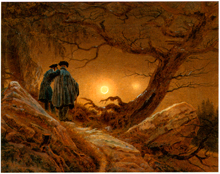
Caspar David Friedrich (1819):
Two Men Comtemplating the Moon
Moonlit Night
It was as though the heavens
Had silently kissed the earth,
Such that in the blossoms’ lustre
She was caught in dreams of them
The wind crossed through the fields,
And swayed the heads of grain
The forest softly rustled
How starry was the night
And my soul spread
Far its wings
And sailed o’er the hushed lands
As if gliding home
(Joseph Freiherr von Eichendorff, Gedichte, Berlin [Duncker und Humblot] 1837, S. 391., translated by K. Winter)
August 15, 2010
Eichendorff’s poem Mondnacht, often translated as “Night of the Moon” unquestionably ranks among his best. It is said to be one of THE favourite poems of the Germans. That I can easily believe, for even the oh so “modern” citizens of the 21. century can hardly remain untouched by the magic of these three verses. And the reason is not only Eichendorff’s positively shattering command of language, his characteristically desirous tone and the subtle intertwining of nature and personal inner reflections. Eichendorff’s strongest poems point further towards greatness, towards metaphysics, and yes, religion. This is clearly the case with Mondnacht, and the key word is “meine Seele” [my soul] (first line of verse 3). The image of death is tenderly and touchingly portrayed as the soul quietly returning home, and we experience death in this context as a liberation from earthly weight and bitterness (thus, in an excellent essay, Wolfgang Frühwald, Professor of German literature). And one should also not overlook the simple fact that Mondnacht belongs to the “Spiritual Poems” within Eichendorff’s collection.
In her preface to the Henle Urtext edition of Schumann’s “Liederkreis” op. 39, in which Mondnacht is the 5th in a cycle of 12 songs, the editor points out that “the religious overtones of the text of Mondnacht were apparently still recognised, for this song was performed on 22 September 1856 at the musical commemoration ceremony for Robert Schumann in Dresden” (Kazuko Ozawa). Click here to read the preface and other information on the newly published Henle Urtext edition. Interestingly, Schumann created four different versions of Mondnacht; you will find them all, together in print for the very first time, in the new Henle edition.
Theodor W. Adorno rightly making reference to Goethe’s dictum remarked that “it is very difficult to speak about Mondnacht, as is the case with all things created to great effect.” And yet, I would like to attempt an approach to the singularity of this especial song. For Clara Schumann, to whom the entire Liederkreis cycle is closely connected, Mondnacht in any case had great importance. From Berlin she wrote to her fiancé, who lived away in Leipzig: “It is deeply melancholy, and so sad that I cannot sing it at all without it bringing sorrow to me” (15. May, 1840).
And there is a hidden, and I assume till now undiscovered beautiful musical allusion from Robert to his bride: the melody of Mondnacht literally cites the beginning of the most famous Beethoven song with the significant title “An die ferne Geliebte” (op. 98) [To the distant beloved].
Schumann was familiar with this Beethoven song, a fact that real Schumann enthusiasts can easily trace to his Fantasy in C major op. 17; at the end of the first movement Schumann cites a no less significant passage verbatim: “Nimm sie hin denn, diese Lieder, die ich dir, Geliebte, sang” [Accept them, these songs, that I sang for you, oh beloved.].
In my attempt to approach this special Schumann song I ensured the knowledge and art of one of the most renowned singers and song teachers of our time; I had the honour of speaking at length with Dr. h.c. mult. Edith Wiens on the topic of Schumann’s Mondnacht. Not only do Edith Wiens’ concerts and recordings convey Schumann’s voice with such incomparable inspiration and enchantment, but she is also soon to answer the calling for a teaching position at the Juilliard School of Music in New York. My conversation with this great artist lasted over an hour and for reasons of space I can only include excerpts here (mostly in German, some in English).
First our conversation centred on Eichendorff’s text and its “transcription” into song. And that led to Schumann and why Mondnacht is such a special song.
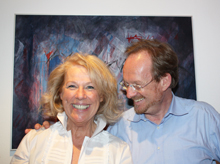
What, in Edith Wiens’ opinion makes a successful interpretation of Mondnacht?
Hardly a singer (among professionals) is not at least a tiny bit in awe of Mondnacht. Why? What are the alleged (technical) difficulties? Does one need to have reached a certain age to sing Mondnacht? And where does this song stand in technical and vocal regards within the context of the other songs of the cycle?
Which pitch of voice does Edith Wiens prefer for Mondnacht? Is it a song more for the male or female voice? Is it acceptable to transcribe the music?
Afterwards Edith Wiens and I listened to numerous (older and more recent) recordings of Mondnacht by Schumann that can be found on YouTube (see the list below). I was curious to know which recordings she liked or disliked and why. She had a word of praise or a friendly comment for almost every one of the singers we listened to. For me it was a wonderful teaching session filled with highly professional criticism.
One of her favourite recordings is Dietrich Fischer-Dieskau accompanied by Günther Weissenborn, especially because of the vocalist’s performance. She found Richard Tauber’s interpretation too liberal, sounding almost improvised; and still his voice contains that famous “teardrop” that Edith Wiens finds so moving. She finds Bryn Terfel outstanding, like a “hot bath”; an opera singer who truly comprehends the song, but perhaps has some problems with the more gentle notes? Among the more recent recordings she favours Matthias Goerne accompanied by Eric Schneider. Why?
Out of all the many pianists we listened to on YouTube Edith Wiens was most impressed by the accompaniment of Leonhard Hokansons (with Hermann Prey) and especially by the piano playing of Vladimir Ashkenazy accompanying Barbara Bonney, whose singing, she remarked, was “very soulful”, but all in all too one-dimensional (vibrato!). This is how Mrs Wiens explains the art of perfect piano accompaniment: the piano must be the opposite of linear; it must be played in a circular movement. That takes away the singer’s fear. Edith Wiens draws an interesting comparison to Richard Strauss’ song “Die Nacht” op. 10 Nr. 3:
When I thanked Edith Wiens not only for her time, but for the rich conversation that was so rewarding for me because I learned so much from her, her answer was:
The following YouTube playlist, specially researched for the readers of the Schumann-Forum 2010 (with the great support of Cornelia Nöckel – thank you!) contains dozens of Mondnacht recordings. You do need some time and have to be in the right mood to listen with concentration to song after song. Perhaps you would like to mark Tuesday, 24. August 2010 in your calendar for that purpose? It marks the night of the next full moon. (How do I know? www.timeanddate.com).
Caution, though: You might become moonstruck! But of course, among us Schumann and Eichendorff enthusiasts this would not be regarded any way out of the ordinary.
YouTube list as download
September 1, 2010
Did you know, dear readers, that Robert Schumann took cello lessons as a young man? And yet this favourite instrument of the romantic era is not bestowed a leading role in Schumann’s early oeuvre, with the exception of those lovely passages in the slow movements of the first and fourth symphonies, and the piano concerto. It wasn’t until very late in his life that he acknowledged the cello more intensely.
Today I want to talk about the five little siblings of Schumann’s cello concerto, namely the Fünf Stücke im Volkston (Five Pieces in Folk Style) for violoncello or violin, and piano op. 102, written in 1849. They deservedly figure among the core repertoire of cellists. But today’s article will certainly arouse the curiosity of violin players as well; the version for violin that partly strays from the cello part (in some passages even the corresponding piano part differs), is in all probability authentic. Not so, however, the other versions that are performed on occasion, such as the (wonderfully enchanting) version for oboe and piano.
On time for the Schumann anniversary Henle published Urtext editions of both original versions (see below).
As a special highlight of today’s article in the Schumann Forum 2010 let me share with you an interview that I conducted with one of the leading cellists of our times, namely David Geringas, on the “Fünf Stücke im Volkston”. Geringas sees the key to these pieces in the title. In his opinion the musician must invent a story to match the piece and “tell” it through the music, like folklore.
If you don’t do that, you will bore your listeners, and this beautiful art will turn into dry and uninspiring music. “Folk style” is not meant as a loud display of virtuosity, rather it is the especially vibrant way of telling an intensely imagined narrative.
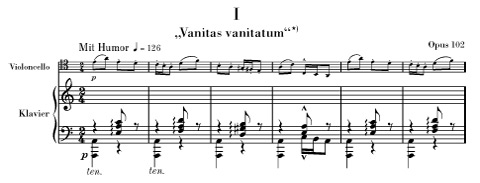
For example, the first piece, entitled “Vanitas vanitatum” (“All is vanity”, or in other words: all things earthly are transitory): Behind the music Geringas imagines someone in love with himself, who simply cannot understand why everyone is making fun of him. This person’s situation needs to be “described”; it is funny and sad at the same time. And immediately King Solomon’s well-known aphorism turns into a real story that a cello player (or violin player), together with the pianist, can “tell” and make graspable.
David Geringas provided the fingerings and bowing marks for the Henle Urtext edition of “Fünf Stücke im Volkston”. (Ernst Schliephake provided the fingerings and bowing marks for the violin edition). For Geringas the printed fingerings are the perfect synthesis of a study of the Urtext, combined with the experience from performing concerts and from teaching (please listen in to the audio file below). Cellists whose hands are not extremely large must also be able to play Schumann’s music smoothly. (Those of you who prefer to mark the solo voice yourself will be pleased to know that Henle offers the solo string parts with and without fingerings. This service is offered for almost all string music editions at Henle.)
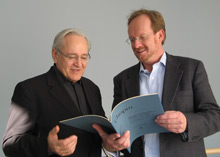
David Geringas and Wolf-Dieter Seiffert
All this and more is discussed by David Geringas in the following interview (in German). I especially recommend the string musicians among my readers to click on the following file:
On YouTube you will find the wonderful recording by the no less famous teacher of David Geringas, namely Mstislav Rostropovich (with Benjamin Britten at the piano!). Enjoy listening to the third piece, “to be played not fast, with much volume” (nicht schnell, mit viel Ton).
In the next article, on September 15, we will return to the piano. Lars Vogt made a recording of Schumann’s Fantasy op. 17 alongside Liszt’s Sonata in b minor. The CD will be released in a few weeks. Reason enough to ask him to contribute an interview to the „Schumann-Forum 2010“.
Further editions of this title
Further editions of this title
September 15, 2010
“The unforgettable intensity in the third movement of the Fantasie! Sviatoslav Richter once said that he felt inhibited to play the third movement, because it is so incredibly deep.”
(Elisabeth Leonskaja)
“In my opinion Schumann’s Fantasie in C major is his greatest piano work.”
(Rudolf Buchbinder)
“To me, Schumann’s Fantasie in its inner poetic dimensions can be counted among the best works in the entirety of musical literature.”
(Lars Vogt)
All are in agreement that Robert Schumann’s Fantasie op. 17 is an unsurpassed masterpiece. Many pianists even rank it among the best piano pieces of all times. It’s clear that the Fantasie in C major deserves to be given a major role in our Schumann Forum 2010, and today its time has come.
It is generally known that, on its publication in 1839, Schumann dedicated the Fantasie in C major opus 17 to no less a person than Franz Liszt: “Dedicated to Mr Franz Liszt”. In turn, Liszt dedicated his Sonata in B minor, published in 1854 to Robert Schumann: “To Robert Schumann”. I felt almost electrified when Lars Vogt, the renowned German pianist, pointed out to me that this was the same year Schumann attempted suicide and was confined to life in the Endenich asylum. Almost certainly that is merely coincidental. But Franz Liszt's words of dedication were by no means chosen incidentally (especially in tone): this is a meaningful musical greeting to the "friend", hopelessly wasting away in Endenich. I put the word “friend” in quotation marks, because the relationship of the two was indeed not unclouded.
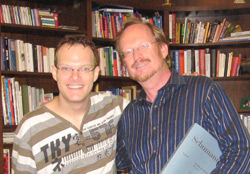
Lars Vogt and Dr. Wolf-Dieter Seiffert
This and the no less two most significant piano works of the 19th century, were the topic of my conversation with Lars Vogt, recorded for you.
It just so happens that Lars Vogt recently recorded both Schumann’s Fantasie in C major and Franz Liszt’s Sonata in B minor in a studio. The CD with the uncannily suggestive combination of the two masterpieces will be published in a few short days.
Schumann was aware that with this work he had created something outstanding and special. To his bride Clara he commented: “The first movement is probably the most passionate thing I have ever done”, only to add quite suggestively: “- a deep lament for you”. Now then, at first it does not at all sound like a lamentation, rather it resounds with great “world-embracing” joy (Lars Vogt). Moreover, Lars Vogt interprets the great beginning of the Fantasie in C major as the yearned for fulfilment of his passionate love:
It’s generally known that Schumann used a verse by Friedrich Schlegel as the motto for the Fantasie in C major; this motto is about “the quiet tone” that only he can hear “who listens secretly”.
This first movement is tremendous, in Lars Vogt’s opinion it “contains the entirety of life, everything!”
The second movement, Lars Vogt finds to be not typical of Schumann, because it is very “heroic” and terrifyingly boastful. But Lars Vogt smartly points out that, despite the powerful accords and the instruction to play “energetically”, the beginning is not in fortissimo and not in a fast tempo, but rather in mezzoforte and “mäßig” (= moderate)
And this is where Franz Liszt becomes involved. Obviously the entire second movement is technically extremely difficult for a pianist to accomplish, and the end with the stretta following measure 232 ff (“much more moving”) is probably one of the most greatly dreaded passages of the entire piano repertoire. The demands are gargantuan and almost impossible to play: leaps between accords with both hands, melody and reverse bass line at fast speed. For a Franz Liszt, though, pianistic peanuts, so to speak. Wonderfully portrayed in “Personal Recollections of Chats with Liszt” by Anton Strelezki (London 1893, p. 4 f.):
He [Schumann] asked me to proceed with the ‘March’, after which he would give me his criticism. I played the second movement, and with such effect that Schumann jumped out of his chair, flung his arms around me, and with tears in his eyes, cried: “Göttlich!”
Lars Vogt interprets the instructions “much more moving” at the beginning of the stretta of the second movement not so much as an indication regarding speed than as an indication of character. Of course the final passage is a conscious “overwind”, a demand “to push to the limits of what is possible and even beyond”. And still, in a performance situation the increase of inner excitation should be conveyed more strongly than a display of outward virtuosity:
The contrast between the second and the third movement in its calm, its peacefulness and the hymnal elements could not be greater. Schumann’s instructions under the title read “Slow and solemn. Consistently quiet”. No doubt: here “Eusebius” has finally asserted himself against the more lively and volatile “Florestan”.
Franz Liszt, to whom the Fantasie in C major was dedicated, surprisingly never performed it in public. He regarded it as too difficult for a large audience to understand. Maybe because of the third movement. Sviatoslav Richter’s seems to support this notion (see above) in speaking of the “incredibly deep” third movement that virtually inhibits him. The third and last movement of Opus 17 compounds the inner turmoil of the human soul in the sense of a conciliatory synthesis and metaphysical glorification. So clearly comparable to the inner structure of Liszt’s Sonata in B minor that also, and much more explicitly than Schumann, strongly confronts the demonic and the divine (all created out of one single musical idea!) and finally fades out in trifold pianissimo. Liszt was aware of the emotional anxieties that can torture highly sensitive natures, and in dedicating his most important piano composition – that he likewise never performed in public – to Schumann, at the time already without voice, in the insane asylum in Endenich, he meant to communicate just that. Lars Vogt spoke enthusiastically and with profound knowledge and in great detail about Liszt’s Sonata in B minor. He summarizes the ideas in the following words:
Thoughts on the ending of Schumann's Fantasy op. 17
What you see here is the last page of the Fantasie in C major op. 17 in the autograph version of Schumann’s copyist Carl Brückner from Leipzig. Why, dear readers of the Schumann Forum 2010, would I choose to show you exactly this last page? Because it is proof of the ending originally intended by Schumann for the Fantasie in C major. You will see if you are familiar with the Fantasie in C major, Schumann originally drew back on the wonderful ending of the first movement of the Fantasie to conclude the entire piece.
And that is, as we know, that touching passage in which Schumann waves to his bride Clara with the Beethoven-citation: “Accept them, these songs” (from Beethoven song cycle opus 98 “An die ferne Geliebte [= Clara]”“).
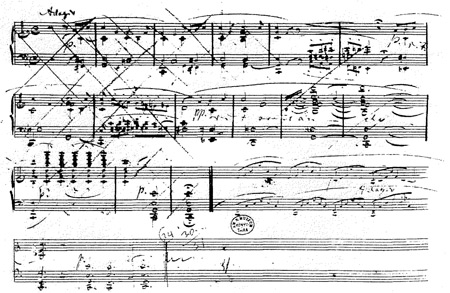
But Schumann distinctly crossed out this passage and replaced it with the closing measures as we know them today. And that is the way they appear in the first edition that was proofread and authorized by Schumann himself. Had the handwritten manuscript for the first edition not survived, we would know nothing of this preliminary stage. But now we musicologists and musicians are left to speculate whether Schumann didn’t in the end weaken the originally “better” ending. Indeed, some very serious musicians do think that way.
For instance, the great musicologist and pianist Charles Rosen published a DVD with the Fantasie in C major with the original ending, the DVD also contains his comments. Next year András Schiff will release a double CD (ECM) with recordings of both versions (by the way there is a recording of a live concert of his on YouTube that you can listen to and watch to find out which version he prefers). Alan Walker, the great Liszt researcher, devoted an essay to this subject and sets the Budapest autograph in an exciting biographical context (Schumann, Liszt and the C Major Fantasie, Op. 17: A Declining Relationship, in: Music and Letters [1979], S. 156-165).
In 1987 the Fantasie in C major was revised by Henle, because we were allowed access to the Budapest autograph. The original ending appeared in a footnote in all of the Henle Urtext editions printed between 1987 and 2003. We ceased use of the footnote in the new critically revised edition published in 2003; the original ending is mentioned in the critical commentary. And of course, since then we’ve received the occasional letter from a piano player asking why we abandoned the footnote; many do find the original ending quite interesting, if not even better.
Exclusively for the readers of this forum I would like to present here, and here only, once more the page from the out-of-print Henle edition with the original version of the ending of the Fantasie in C major.
You will want to know why we decided not to include this addition in the current Urtext edition. Well, the answer has a lot to do with the responsibility that we carry as editors and publisher. As already stated, Schumann’s will is clear. He does not wish the original version to be played. In his opinion it is obsolete. He clearly crossed it out and replaced it. His proofreading of the first edition was very careful and meticulous. And final dictum is final. We have to respect that. As much as it is, from a scholarly point of view, highly interesting to see how the Fantasie in C major reached its final form, so little does that have to do with true Urtext. It is not our aim to show musicians the early versions of different parts of drafts; rather we aim to present the correct music as ultimately authorized by the composer. And so, in the former Henle editions, we made a mistake in printing the version that Schumann himself had purposely discarded (it looks almost like an “ossia”, even if it is not declared as such; see above pdf).
October 1, 2010
Dear Readers,
There is a concert that ranks among my personal richest experiences of the last several years. It was a Schumann matinee given by pianist András Schiff in the excellent and lovely “Reitstadl” in Neumarkt, Bavaria in January 2009. The concert was recorded and will be published on CD by ECM (planned for the beginning of 2011). It was my honour and my pleasure to talk to this exceptional musician about Schumann, and I did this exclusively for you, dear readers of the Schumann Forum.
The central issue of our conversation was the question whether there is an unmistakable “Schumann sound” and whether it is at all possible to grasp and describe it. You can listen to excerpts of the conversation here. It was conducted in German. Those among you who do not speak German will be happy to read the summary that I wrote up in German and which has also been translated into English.
Maestro Schiff confirmed the key question whether a specific “Schumann sound” exists:
In an attempt to describe the Schumann sound with words András Schiff then talked about Schumann’s piano settings which he regards as revolutionary and genial.
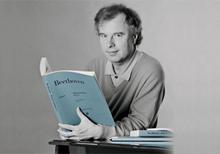
Sir András Schiff
He points out as an essential aspect the unusual textures of the middle parts:
Schiff proceeded with insightful comments on Schumann’s efforts to often disguise the metric pulse; he tends to conceal the first downbeat of the bar which is so peculiar to his compositions:
Schiff revealed another unfailing characteristic of the Schumann sound - his pedal instructions in the piano works:
One observation that we have all made is evident for instance in Schumann’s “Kreisleriana” op. 16: the piece ends very, very quietly in a triple pianissimo. Kapellmeister Kreisler has disappeared from the scene and the audience is a bit at a loss. Has the piece ended? Was this the cue for applause? András Schiff emphasizes this particularity. It is so typical of many of Schumann’s piano works that they simply will not end thunderously with great effect on the audience:
Not at all surprisingly András Schiff regards Schumann’s unconventional tempo instructions, the poetical mottoes of many works, the intellectual and literary background of Schumann’s entire oeuvre as extraordinarily important and inspiring. Schumann is tremendously helpful to the pianist in revealing his intentions in written words that can be read and followed:
Finally, we came to speak on Schumann’s late works which András Schiff very much reveres, but other pianists avoid like a curse. Why so?
At the end of our conversation Maestro Schiff returned to the special value of the first versions of Schumann’s piano works that he feels are in some cases better, and even more inspired, than the later versions that Schumann approved. Mr Schiff attributes this continuous desire to improve finished works to Schumann’s emotional instability and his lifelong insecurities.
One of the truly great Schumann pianists (and conductors) of our time is Christian Zacharias. When I first started the Schumann Forum 2010 in January I already fostered the desire to have the opportunity to question him on Schumann and to publish his answers online for you. In the summer, in between his rehearsal times for the “Schubertiade” in Schwarzenberg (Austria) I actually got my chance. We sat together at the edge of a lovely green meadow, the birds in the trees were giving a natural symphony (their song is heard in the background on the recording of the interview) and Maestro Zacharias was in the best of moods for a chat.
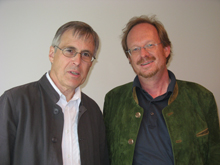
Christian Zacharias and Dr. Wolf-Dieter Seiffert
I am especially honoured to post the interview with Christian Zacharias on the Schumann Forum, because it gives the G. Henle Verlag the added opportunity to officially congratulate Maestro Zacharias on his 60th birthday which he celebrated in the spring of this year. To what great extent Christian Zacharias centres his interest on the music of Robert Schumann is not only made evident through his countless Schumann concerts and numerous Schumann recordings, but also through his contribution to the 1989 French-language film production “Robert Schumann – Le poète parle”.
My questions to Christian Zacharias were more or less the same ones that determined my rich discussion with András Schiff (ref. preceding entry from 1. October). The essence of our talk was to define what makes Schumann’s (piano) music so unique and original, to pinpoint what makes his music so unmistakeably “Schmannesque”. Maestro Zacharias’ thoughts are equally as insightful as András Schiff’s and reflect an unbelievably thorough and deep knowledge of Schumann’s oeuvre. Perhaps he voices more criticism than András Schiff (for example his opinion of “Papillons” op. 2 is that they are not consistently perfect, whereas Schiff notably regards them as Schumann’s key work), but after an hour of talk about Schumann it was clear to me that I was conversing with a true Schumann enthusiast like no other; Zacharias is from the core of his being devoted to Schumann.
Dear readers, the interview is posted here exclusively for you. I summarized an abstract of the conversation in writing (in German and English) and have put together the key moments of our talk.
Before I had even unpacked my notes and questions on Schumann Maestro Zacharias himself immediately remarked on Schumann’s metronome markings and the value of finding them reliably researched and printed in the Urtext editions, and his conviction that they need to be taken seriously and heeded by all musicians. He especially praised my article on the metronome markings that was posted on the Schumann Forum 2010 in July (Levels of Difficulty) (the article also contains a practical list all of Schumann’s authentic metronome markings). Because Henle recently published an Urtext edition of Schumann’s Piano Concerto (see "The Piano Concerto") Maestro Zacharias was prompted to comment on this piece first, especially because this masterpiece is misunderstood or rather misinterpreted by many pianists in regards to tempo and measure. Listen here to what Christian Zacharias says (and sings) about his early approaches, many years ago, to follow the correct metronome instructions against all - distorting - tradition.
By the way, the booklet by Bruno Walter that Maestro Zacharias mentions at this point is “Von der Musik und vom Musizieren” and was published by S. Fischer. It is out of print now, but is available through several antique book sellers, and much worth reading.
We quickly reached the essential question, namely what is so incredibly unique about Schumann’s piano texture, and why his music is at times confronted with the complaint of being unwieldy. Zacharias spontaneous answer is astounding and he not only refers to Chopin and Liszt, but also (as a conductor) draws a comparison to the way Schumann structures his orchestral works.
In the following course of this rich conversation Maestro Zacharias proved to be a truly profound connoisseur of Schumann’s entire oeuvre. He drew parallels throughout many genres and biographical stations in Schumann’s life, referred to individual passages in Schumann’s works and highlighted them – I was hardly able to follow. Again and again it was evident that he does not at all attribute the rank of a masterpiece to everything that Schumann wrote. Especially the late works he is inclined to view critically (quite in opposition to András Schiff).
I personally find that the pedal instructions in Schumann’s piano works are an especially ingenious dynamic element that far too few pianists pay enough attention to ("The Prophet Bird"). I commented to that effect and added what a pity it is that many pieces don’t have detailed pedal marks and only contain general instructions to use the pedal - only to be immediately interrupted by the Maestro:
And because Christian Zacharias especially uses the “Papillons” op. 2 as an example, I would like to provide the link to the new Henle edition for further reference. If you have the copy you will be able to study in “Urtext” the last passage of this work which is possibly unique in the history of music, indeed.
At this point of reading and listening you will want to experience Zacharias and Schumann together. I can only encourage you to go to a live concert. If you don’t have that opportunity then at least I can point you to some recordings; I personally think that Zacharias’ recording of the Piano Concerto is among the best ever (see also my above article "The Piano Concerto"). And I would like to recommend the Piano Box released by EMI for the anniversary. It contains a wonderful collection of recordings of the greatest Schumann pianists.
From the set you will now be especially interested in Christian Zacharias’ interpretation of “Papillons” op. 2, “Davidsbündler-Tänze” op. 6 and “Kinderszenen” op. 15.
For more immediate enjoyment I would like to lead you to a live recording of the “Fantasiestücke” op. 12 on YouTube. Admittedly it is already 20 years old (recorded in 1990 at a festival in France), but who would not admire and be enraptured by the unfaltering, exquisitely poised and masterly touch of Christian Zacharias.
Part 1: op. 12 No. 1 “Des Abends” and No. 2 “Aufschwung”
Part 3: op. 12 Nr. 5 „In der Nacht“ and Nr. 6 „Fabel“
Part 4: op. 12 Nr. 7 „Traumes Wirren“ and Nr. 8 „Ende vom Lied“
Further editions of this title
Further editions of this title
Further editions of this title
Further editions of this title
November 1, 2010
Dear readers,
I have just returned from the International Music Fair in Shanghai. There I had the opportunity to talk to one of the most highly renowned Chinese pianists, university professor and member of the jury of international piano competitions: Professor Li Ming Qiang from Hong Kong. Of course the music of Robert Schumann was the main topic of our conversation.

Prof. Li Ming Quian
How does someone in faraway China approach Schumann’s music? Can his music at all be understood or are there obstacles that are only very difficult to overcome? Our conversation was especially important to me because I know that you achieve new and fresh insights when you change your perspective. When, so to speak, we peer through Chinese spectacles, Schumann’s music will suddenly become exciting and new to our experience. This is discussed in our conversation that you can hear in excerpts (in English, with some Chinese) and which I have also made a protocol of in writing (English and German).
Click HERE to read the written version.

Dr. Wolf-Dieter Seiffert and Prof. Li Ming Quiang
At the beginning of our conversation I asked Mr Li to give us a short overview of the current situation of the Chinese music Conservatories. I had asked him to start speaking in Mandarin, which he did, and then changed to English. And then we remained with English to the end of our talk.
We soon moved on to Schumann and his piano works. Professor Li remarked that, just as in the western world, a small number of Schumann’s works are especially popular, the rest, however is mostly unacknowledged. Overall he thinks that Chopin’s music is closer to the Chinese than Schumann’s. Schumann is difficult for most all Asians to understand. Why is that so?
And still, the music of the “Romantic“ era is by far the most popular classical music among the Chinese audiences (and among Chinese musicians).
It is not without pride that I am here for the first time publicly announcing that G. Henle Verlag has this year contracted a license agreement with “Shanghai Music Publishing House” (SMPH) to publish the complete piano works of Schumann in our newly revised edition. In the course of the next years all six volumes of this version will be translated into Chinese and (exclusively) sold on the Chinese market. Professor Li was not insignificantly involved in the realization of this pathbreaking license agreement. In future the SMPH-HENLE edition will decisively distribute the correct and reliable music of Schumann in China.
Listen here to the part of our conversation that evolved around this topic that truly bears fruitful future prospects for Chinese musicians.
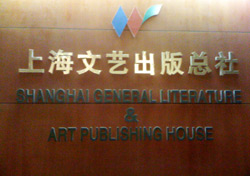
November 14, 2010
Dear readers,
Colored leaves everywhere, on the trees and on the ground. I can see them outside my window, on Forstenrieder Allee in Munich, where the G. Henle offices are. Colored leaves everywhere – that's the keyword for today's entry on the Schumann Forum: Schumann's seldom played "Bunte Blätter" opus 99.
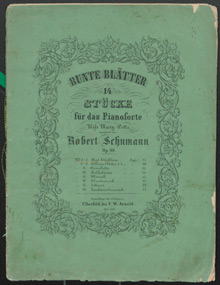
Robert Schumann, Bunte Blätter op. 99,
First Edition, Robert-Schumann-Haus Zwickau;
Archiv-Nr.: 1996.23-D1;
the download of this image is prohibited
I am especially taken by O N E of the "leaves" out of opus 99. It's the fourth one, in f-sharp minor ("fairly slow"). And I want to take a close look at it with you. Its simplicity and touching melancholy make it especially attractive to me. And others share my sentiments; Clara Schumann and Johannes Brahms felt likewise. Both wrote lengthy variations on exactly this piece:
Clara Wieck-Schumann, [Seven] Variations on a Theme by Robert Schumann, dedicated to him, op. 20 [1853]: Urtext edition by G. Henle Verlag HN 393, pp. 62–73
» more information on that edition
An additional page reference for "insiders" be mentioned here: an album exists on this theme with a handwritten note in Clara Schumann's pen "for Miss Julie Schmittermeyer in commemoration", January 1856 (Vienna) (Universitätsbibliothek Frankfurt am Main, Signatur: Hs 2355).
Johannes Brahms, [Sixteen] Variations on a Theme by Robert Schumann, op. 9 [1854]: Urtext edition by G. Henle Verlag HN 438 (Single edition)
» more information on that edition
or HN 440 (Brahms, Variations for Piano), S. 1–22
» more information on that edition
Both cycles of variations, by the way, were published at the same time, in November 1854. At a time when Robert Schumann had already spent eight months as a patient in the private hospital of Dr. Richarz in Endenich.
The piece in f-sharp minor (entitled "Album Leaf") is only a short page of music, and not all that difficult to play (on the Henle scale of levels of difficulty ranging from 1–9, it ranks on level "4", making it the easiest piece out of opus 99):
» Levels of difficulty of "Bunte Blätter op. 99"
On first glance you might feel inclined to think the piece is a chorale, the melody of the soprano voice is church-like, carried, almost monotonous, and suspended in the style of a four-part hymn. I am convinced that similar songs could be discovered in a Christian songbook. But it is not a hymn, it was newly created by Schumann "in the traditional style".
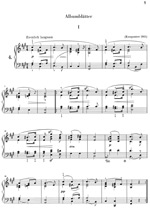
Robert Schumann: Bunte Blätter op. 99,4
What also underscores the similarity to a chorale is the symmetry of the four measures in a very simple sequence:
A – B – A: | 4+4 |: 4+4 + 4+4 :|
The chorale idiom in combination with the very simple formal structure appears "antiquated" to us, like a citation from an earlier, long ago time. And that is seemingly not enough, in the first "album leaf" Schumann makes use of the gesture of the (baroque) gavotte. This usually hasty dance, here frozen as in slow motion, is characterized by the metrics short-short-long. I would say "Der Dichter spricht" (the last piece of the "Kinderszenen" op. 15) is related to our album leaf in this respect. Don't you think so, too?
Perhaps the gavotte "idiom" was the main thing that prompted Clara Schumann, and especially Johannes Brahms to use exactly this album leaf as an inspiration for variations; already during Bach's time gavottes were popular templates for variations, and in addition we know that Brahms very much favored variations of old music forms.
I mentioned above that the album leaf in f sharp minor appeals to me especially in its melancholy. I am moved to believe that it is exactly Schumann's reference to the old themes of the gavotte and chorale that make me feel this way. But the decisive element, what is really so intriguing about this piece, is the way it combines the old with the completely novel. And what is novel is the harmony. What Schumann does is to consistently repeat the melody of part A, almost like a formula, and combine it with ever-changing chords in the underlying (harmonic) structure. The effect is astonishing, because it proceeds to vary the illumination of the simple melody to create ever changing "colors": In the first four-measure unit we remain in f sharp minor, the next four measures take us from f sharp minor to A major, and the following four-measure unit (= mm. 17-20) leads us from the diminished seventh chord a#, followed by a cadence in A major, only to finally return to the f sharp minor of the first four measure unit. And above that, all the while the same four measure melody continues. Astonishing, isn't it?
And then there are the seventh and ninth chords, always on the stressed measures 2, 6, 18 and 22. Try it out on your piano; play the first four measures and pay special attention to the effect of measure two, first beat. You will suddenly feel the pleasantly sharp dissonance of the chord in the pacing symmetry of the gavotte. You must allow yourself the enjoyment of this harmonic spice, so to say – and you will see how the little piece develops depth and greatness. For, it is exactly this chord that is the repeated little climax in the inner development of the movement: for this short instant motion halts on the dotted c#2 – in the base voice we make out a d (major seventh) or a b (major ninth) – the sharpest of disharmonies, actually. It makes you hold your breath. The "false" bass deeply enriches the traditional four-part chorale passage. All the other voices in the chord progress properly and meet our logical musical expectations. This is how, in these passages, Schumann creates four-part chords, inconceivable in the baroque or classic period, because it simply wouldn't go. I find it is these four-part chords (triads with major sevenths or major ninths) that really determine the dynamics of the piece. They actually become independent; they have their own sound value, and on top of that always positioned in the metrically stressed centre of the sequence of measures. And in my opinion these seventh or ninth chords are what, along with the "antiquated" framework of the choralesque gavotte, create the melancholy mood. They gently color the "pure" triad by impressively integrating a fourth, actually disruptive, note. Even if you, dear readers, should not agree with me that the mood is melancholy, then surely, though, you will agree that the coloration of the triad in f sharp minor with the added bass d or b is about "colored leaves" in a related sense, namely in the sense of being "chromatic" and thus having to do with color. Incidentally, if you were to analyze this dissonant chord with the usual tools of harmonics, you would most certainly be confronted with terms like "false conclusion" or "mediant", suspended note or VI. degree. All of which undoubtedly applies, but has nothing in the least to do with the true effect (!) of our piece. Don't you agree?
To conclude, the diminished chord in measure 17 that is dissolved in the colored f sharp minor chord in measure 18 deserves to be mentioned. This diminished chord (m. 17) is the only one in the entire piece that Schumann explicitly marks with a sustaining pedal sign. And not only in order to integrate the grace-note a# into the chord sound of the left hand (the chord could not be grasped without the pedal), but also to create an audible contrast for the spherically diminished sound with the help of the pedal. Because, if you do not listen very closely, you will not notice that this is exactly where the repetition of part A sets in. The diminished chord again covers up and adds color to the rather simple melody.
These colorations are what make the little album leaf from opus 99 so appealing. And it fits in so beautifully with the slightly melancholy autumn mood that we should abandon ourselves to with Schumann, when we now listen to the piece. It is played by Mikhail Pletnev, a grandiose Schumann pianist, whose style I find exciting and inspiring ("exciting" in two meanings of the word: he fills each note with vivacity and depth, but often plays rather willfully, almost stubbornly, especially in his emphasis of polyphone voice leadings). Be it as it is, he plays our album leaf beautifully and exactly as it should be played. One is almost moved to bow in gratitude.
December 1, 2010
Robert Schumann died on July 29, 1856 at the age of 46; even in his time this was an early death. And so, to apply the term "late works" to the compositions from the last years of his life, approximately from 1850 on, seems justifiable only in relation to his (short) life. But on the other hand, these "late" works might be different in a special way, they might contain a structure that we would be moved to call characteristic of Schumann's mature style. And, what role does Schumann's mental illness play? The compositions from Schumann's last years are certainly not (and in distinct contrast to his "early works") what we would today regard as box office successes.
Granted, these ideas are not at all novel. They have been discussed by musicologists at least from the 1980s on. Lately many musicians have been strongly promoting Schumann's "late works", and it seems that now, at the end of 2010, it might not be too bold to state that for the larger part these Schumann compositions have been restored to good repute, if not yet well and far enough known.
In our "Schumann Forum" as well numerous musicians were heard on this topic. Devoted readers of the Forum will remember (and the others are welcome to refer to back entries) that in this regard the opinions strongly differed. The scope reaches from Gerhard Oppitz' remark "ingenious, visionary, enigmatic" (9 Questions for Gerhard Oppitz) to Christian Zacharias: "I find Schumann's late works for the piano disturbing" (9 Questions for Christian Zacharias).
The obvious circumstances of Schumann's wasting away and eventual death in the private hospital of Dr. Franz Richarz in Endenich make it difficult to take a factual and unbiased approach to the issue itself. Physicians widely agree that in his last years Schumann suffered from the progressive paralysis of a syphilitic disease acquired early (1831).
This consensus holds strong, and is not in the least weakened by Uwe Peter's hypothesis, more or less a conjurer's hat trick; he willfully attempts to re-interpret the absolutely clear documents (journals, letters, diaries) and lastly reaches the "spectacular" conclusion that Schumann was not at all mentally ill, but simply an alcoholic who was removed to the insane asylum in Endenich by his wife Clara.
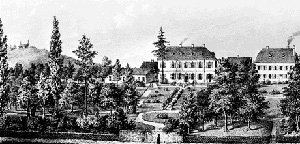
Asylum for the insane in Endenich near Bonn about 1850
Whatever the case may be, the fact remains that the oeuvre and illness in Schumann's case are to this day an unfortunate combination that necessarily lead to the general tendency of dismissing the issue; "what else would you expect from a madman?"
Solely for the Schumann Forum I broached the intriguing subject with Hans-Joachim Kreutzer. This inspiring conversationalist has the immense advantage that he is neither a musicological apologist of Schumann's "late works", nor is he a musician who feels the need to take sides as a performer. Mr. Kreutzer is a brilliant amateur pianist in the best sense of the word, and he was an internationally renowned professor at the University of Regensburg, as well as President of the Kleist Society. Kreutzer authored numerous articles on and about the intersection of literature and music. Above all, however, says the editor of the Schumann Forum, he is a highly sophisticated connoisseur of the works of Robert Schumann.
I've made an excerpt of the audio interview with Mr. Kreutzer on Schumann's "late works" available here (in German language). It contains all of his core statements which you can read HERE also in English.
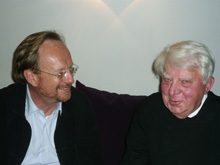
Dr. Wolf-Dieter Seiffert and Prof. Hans-Joachim Kreutzer
Question: Mr. Kreutzer, do you use the term "late works" in regards to Schumann at all? And if yes, why?
Question: To what extent do you share the widespread opinion that Schumann's works are influenced by his illness, and was that from the beginning the way the audience saw it?
Question: You especially mentioned Schumann's "harmony" that noticeably changes in the "late works". Could you specify that?
Question: Something new, something unexpected - is that characteristic of Schumann's "late works"? And please let us know what comes to your mind in regards to things new.
Question: Which pieces impress you most in these regards?
Question: Which of Schumann's late pieces do you most prefer to listen to or play ?
Question: Are there any late compositions of Schumann that you would call "failed" ?
Question: What is the reason that many musicians still tend to avoid playing Schumann's "late works"? Do they cater to the "large audiences" that prefer to hear the "Davidsbündlertänze" rather than "Gesänge der Frühe"?
Dear Mr. Kreutzer, thank you very much for our rich and enlightening conversation.
Dear Readers, to conclude this article I would like to offer you a link to a historic recording of Schumann's Violin Concerto. The sound of the recording is technically less than satisfying, but the performance moves (me) all the more, because Georg Kulenkampff woke Schumann's late works from their almost century long slumber; it is the premiere performance and recording. We can easily forgive him the fact that he takes such a liberal hand to the written music, because he expresses such true artistic greatness when he plays Schumann.
Georg Kulenkampff, Violin, Berlin Philharmonic, Hans Schmidt-Isserstedt (1937)
Schumann, Concerto for Violin and Orchestra d minor, 1st movement
(Part 1 and 2):
December 15, 2010

Dear Readers,
Do you enjoy reading other people's journals and letters? The more intimate the better? My slightly provoking question has the following, quite simple reason: as Schumann-enthusiast I welcome the abundance of private and even intimate letters left behind by him. He kept journals, a diary of matrimony, a housekeeping log, letters and notes – and all these he meticulously saved (for posterity).
And yet, again and again, I have the feeling of being an indiscreet imposter, that I am invading someone's privacy when I read these documents (extraordinarily well edited and commented on by Gerd Nauhaus). And on top of that, I do ask myself how close my readings really bring me to this genius of music? And even if they do, how interested am I really in Schumann as a person? My true interest is in his divine compositions, isn't it?
And then, in 2006, the medical report from the asylum in Endenich was published by Bernhard R. Appel. The documents revealed therein are shattering. With his novel "Schumanns Schatten" Peter Härtling certainly succeeded in turning this sordid life story to literary gold, but do we really need to know all the painful facts of Schumann's fading out in the insane asylum. Perhaps we should cease watching.
These are the thoughts I would like to begin with, because today I am writing my last article for the Schumann Forum 2010. The topic is Schumann's Variations in E flat major (the "Ghost Variations"), his last complete work immediately before he committed himself to the hospital in Endenich. I have come to cherish this outwardly inconspicuous piece ever since I read the music for the first time, and especially when, later in 1995, I had the good fortune to be able to edit the first and still only Urtext edition. (It is wonderful to observe how it is since performed and recorded increasingly often, especially because it was almost unknown before.)
Further editions of this title
Further editions of this title
To go into the details of the very moving and private circumstances that led to the creation of this last Schumann piece would go too far here. Please invest five minutes of your time – if you understand German language – to listen to this excerpt from a successful audio book that was published only a few months ago. The chapter I would like to share with you is entitled "Among Ghosts" and summarizes the tragic occurrences.
from: Das SCHUMANN-Hörbuch – Leben in der Musik, Eine klingende Biografie von Corinna Hesse - mit zahlreichen Zitaten von Schumann und seinen Zeitgenossen sowie über 50 Musikbeispielen. Sprecher: Dietmar Mues und Anne Moll, Silberfuchs-Verlag
Right at the beginning of my work as an editor for G. Henle Verlag in the 1990s I had the great good fortune to receive, along with my good friend Michael Struck, already at the time one of the best Schumann connoisseurs, an invitation from a true Schumann enthusiast and collector of autographs, Walter Beck. To our great astonishment he presented to us the complete autograph of the "Ghost Variations" that had until then been considered lost. It was his intention to publish a facsimile with a rather esoteric commentary. I authored an exact chronology of the events, but I did not want to be drawn into Beck's esoteric ideas (influenced by the teachings of Rudolf Steiner). Beck finally published the facsimile elsewhere (using my unsigned and unauthorized manuscript). Neither the quality of the reproduction nor the accompanying text, are truly convincing.
The loss for my publishing company of the opportunity to publish the wonderful facsimile was balanced by the Urtext edition that we were now able to publish, because we had access to the autograph. I was wildly enthusiastic about the project. For even the first cursory reading of Schumann's autograph revealed deviations from the only existing print version (Karl Geiringer's commendable first edition from 1939), in some instances quite relevant ones.
An entry of Clara Schumann in reference to the copying expenses for the E flat major variations in Schumann's housekeeping log (April 1855) proved to me that Schumann's autograph had been professionally copied (how helpful it is to have this record). Perhaps this copy had been sent to Schumann at Endenich, or had even been delivered by Brahms? I started to search and was soon rewarded in the world's most eminent Brahms libraries. The archives of the "Gesellschaft der Musikfreunde in Wien" do actually own this copy and a thorough reading of the up to then unknown source soon revealed that it contained handwritten corrections (presumably also) by Schumann. In some cases it is helpful in deciphering Schumann's sometimes illegible hand, and it was evident that the copy in Vienna had been used as the manuscript for Geiringer's first edition. (In some cases he had made changes.)
After painstaking work comparing the versions I succeeded in creating a correct copy of the music of the "Ghost Variations" for the very first time. Since then an Urtext exists. The abundance of information that had been collected went beyond the mould of what is usually included in the commentary of a G. Henle Urtext edition. So I wrote an article in which I included references to all the information available on the history of the "Ghost Variations", the sources, the text documents and the process of its creation. To those of you who are especially interested in the details and are avid readers of the Schumann Forum 2010 I am happy to offer the complete article for download here.
» download the article in german (PDF, 9 MB)
Wolf-Dieter Seiffert: Robert Schumanns Thema mit Variationen Es-Dur, genannt "Geistervariationen", in: Compositionswissenschaft. Festschrift Reinhold und Roswitha Schlötterer zum 70. Geburtstag; herausgegeben von Bernd Edelmann und Sabine Kurth, Augsburg [Verlag Wißner, ISBN 978-3896391704] 1999, Seiten 189-214.
With this "Farewell in E flat" (I lent the title from a talk given by Michael Struck, Bordesholm on the "Ghost Variations" in April 2010 for the Leipzig Schumann Conference) I also am saying farewell to you, dear readers of the Schumann Forum 2010. Throughout the entire year it was my special pleasure to wallow in Schumann-related topics every two weeks, for the most part taking the publisher's view. I would like to take this opportunity to thank all of you who regularly or sporadically looked in to read the "news" on Schumann, those of you who made the effort to write to me and share their opinions and comments, thank you also in advance to the readers who might visit the Forum again – or for the first time – even after the Schumann anniversary 2010 is over and will entertain and inform themselves here. Instead of one of the (usual) YouTube-Links I would like to end today with an excerpt from the closing chapter of Peter Härtling's book "Schumanns Schatten" (Munich [dtv] 92010, p. 383 f.; English translation by Kristina Winter):
All the others stepped aside. Schumann recognized her at once. And he had really already moved on to another world. He lifted his arms, let them go down again, and lifted them again, and sat up in his bed. She knelt next to him. Her dress rustled. Again he lifted his arms, very slowly, against a heavy weight, and embraced her. They held the embrace for a long time. This is true. The others held their breaths. And I ceased watching.
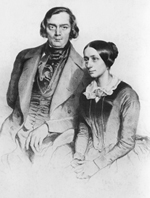
Robert and Clara Schumann


